- Home
- slideshows
- miscellaneous
- I've driven midsize SUVs from Toyota, Honda, Ford, VW, Chevy and many others. These are the 10 best ones I've reviewed.
I've driven midsize SUVs from Toyota, Honda, Ford, VW, Chevy and many others. These are the 10 best ones I've reviewed.
The Honda Pilot is perhaps my favorite vehicle in the entire midsize segment. We tested a top-of-the-line, all-wheel-drive Elite trim, priced at $49,015.

The third-generation of the Pilot was updated for 2019. Our review vehicle came with 20-inch wheels.
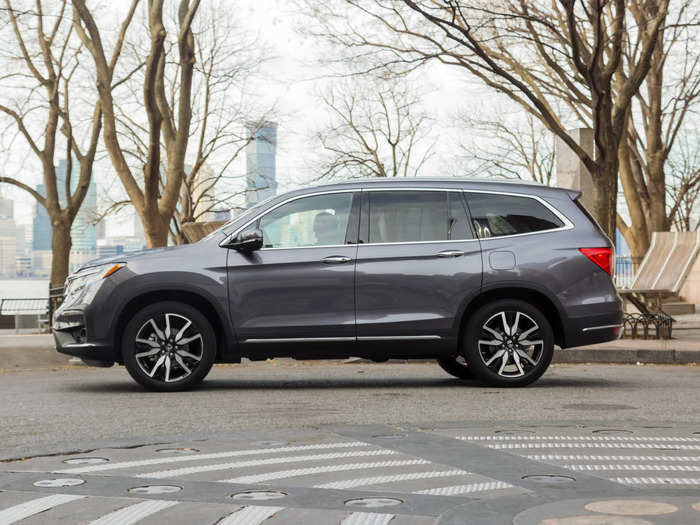
The rear of the Pilot got revised tail lights, bumper, and chrome accents.
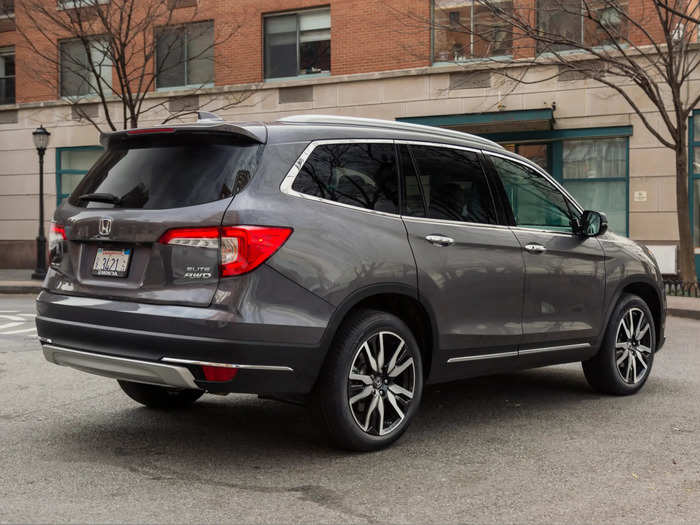
Out back, the Pilot is equipped with a handsfree tailgate that will lift up automatically if the driver swings their foot under the rear bumper. Behind the third row, there is 16 cubic feet of cargo room. With the rearmost seats folded down, cargo volume expands to 46 cubic feet. With the second row folded, that figure expands to 82 cubic feet.
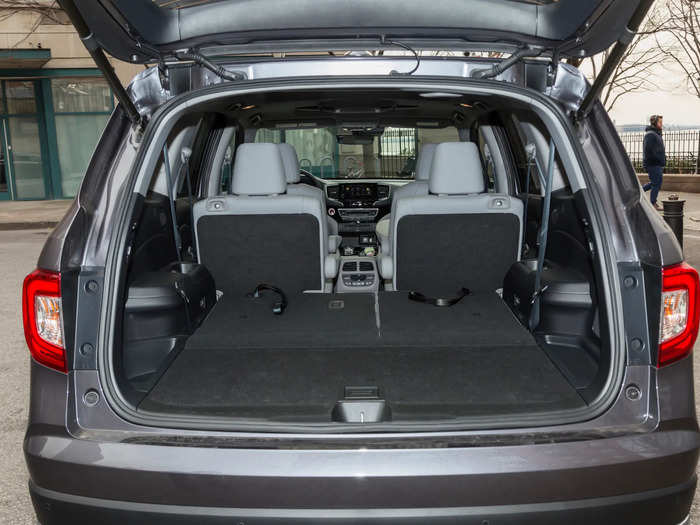
The Pilot's interior is roomy, comfortable, and well put together. Overall material quality is superb. There wasn't a squeak or rattle to be detected. Even on the pothole-riddled roads of New York and New Jersey.
Interior updates for 2019 included a new steering wheel, redesigned trim pieces around the air vents, and wider front passenger armrests.
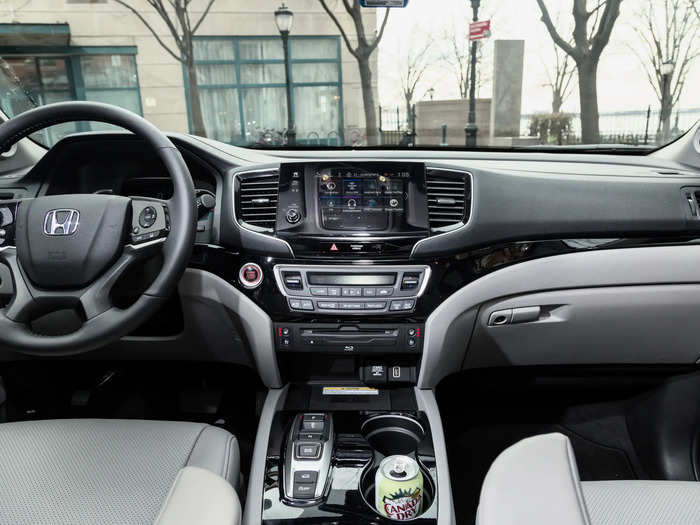
The rear cabin can be optioned with either a second-row bench or captain's chairs. With the bench seat, the Pilot can haul up to eight passengers.
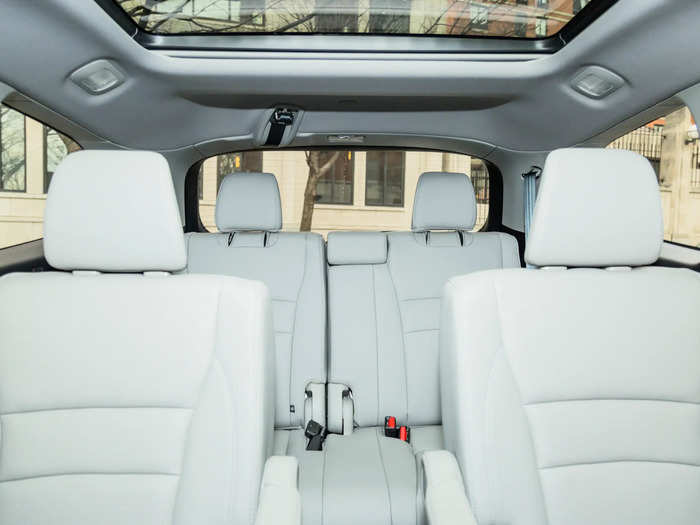
Under the hood, all Pilots are powered by a 280 horsepower 3.5-liter, naturally aspirated VTEC V6 engine. The V6 is paired with either a six or nine-speed automatic transmission. Our test car came with the nine-speed.
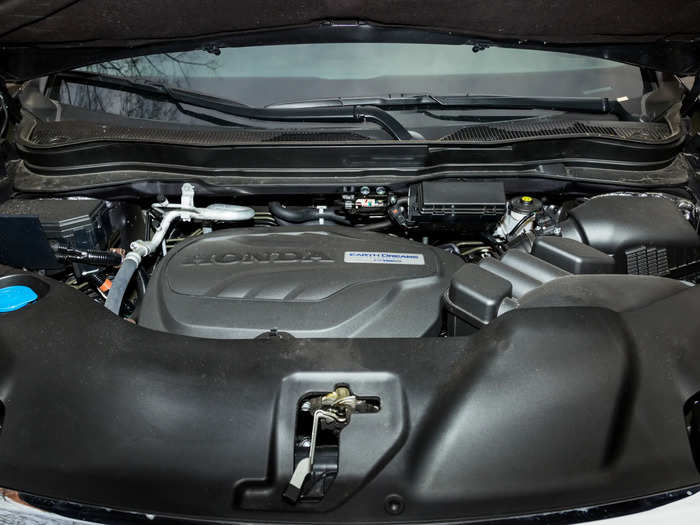
According to Honda, our Pilot Elite should be able to deliver 22 miles per gallon of fuel economy in mixed driving. However, we struggled to get above 17 mpg.
All Pilots except the base LX trim are equipped with an eight-inch touchscreen running Honda's newest infotainment system. The Pilot LX gets a five-inch screen.
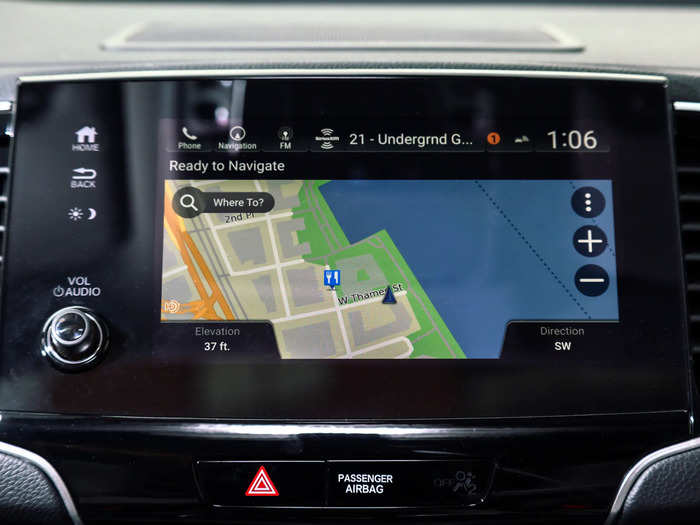
The new system is a marked improvement over the previous unit. It's clearly organized and crisply rendered. Although we are happy to see the return of a volume knob in place of the touch panel, we would have also liked to see a tuner knob as well.
There's also Android Auto and Apple CarPlay integration. And our Elite test car came with a built-in navigation system. However, it proved to be surplus to our requirements with Google Maps, Waze, and a host of other navigation apps at our disposal.
The Honda Pilot is the epitome of excellence in this genre of automobile. The third-generation Pilot was always a strong competitor in the segment. But the updates for the 2019 model year have corrected some of most glaring faults and bolstered its position as one of the finest family SUVs money can buy.
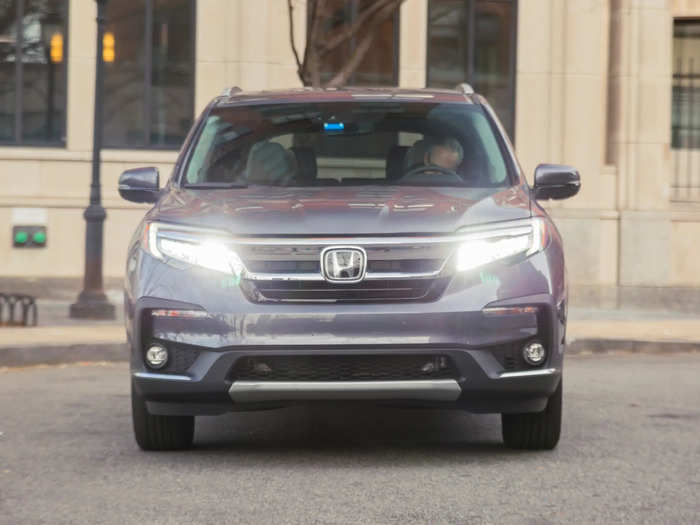
The Toyota Highlander is a stalwart. I tested it in two configurations: a terrific hybrid version that stickered at $49,000 and ...

... a gas-powered Highlander SE that was priced at $42,000.
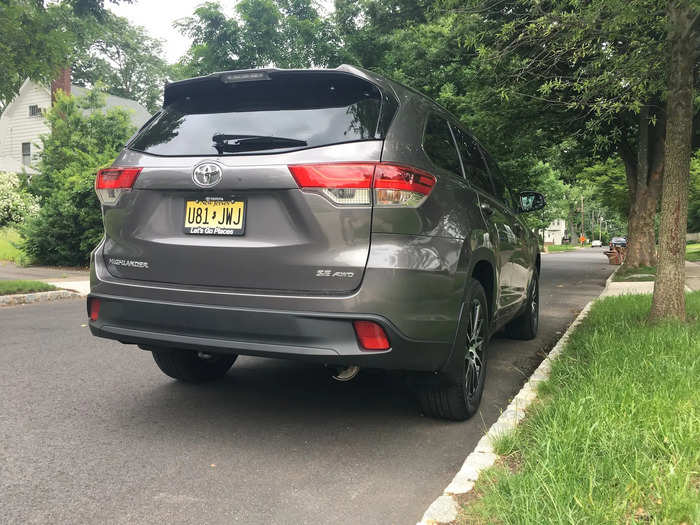
The Highlander's side profile is traditional crossover utility — boxy with rounded edges. It straddles the line between tall wagon and traditional SUV looks.
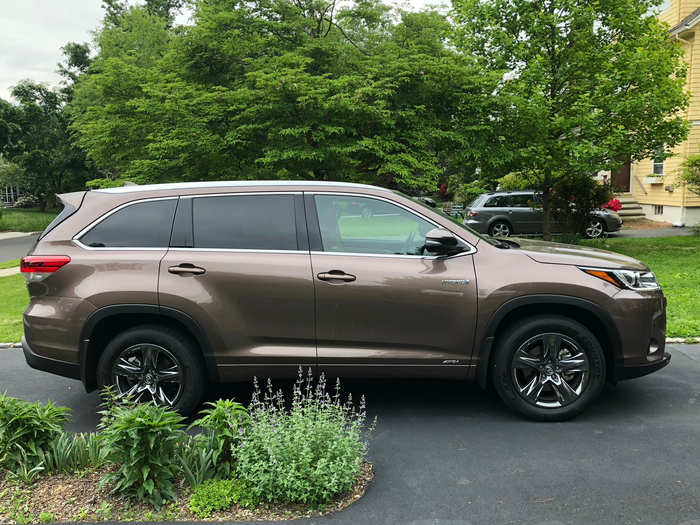
The rear end of the Highlander features an integrated roof spoiler and a traditional lift-up tailgate.
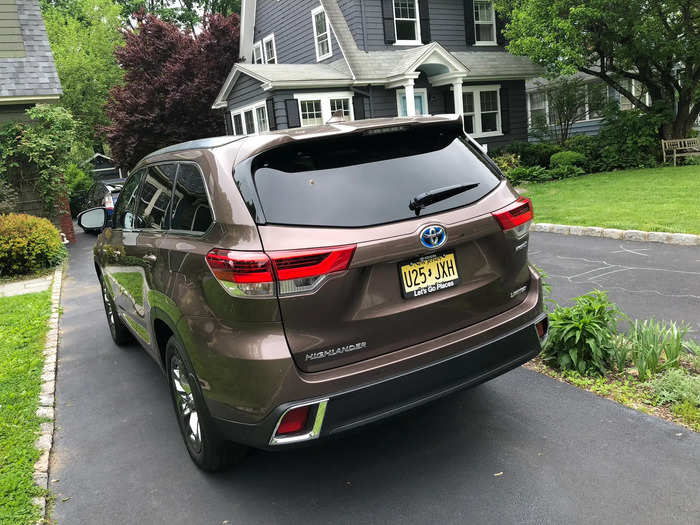
There are 13.8 cubic feet of cargo room behind the third row. With the third row folded, cargo capacity goes up to 42.3 cubic feet. Fold down the second row and the Highlander's cargo space nearly doubles to 83.7 cubic feet.
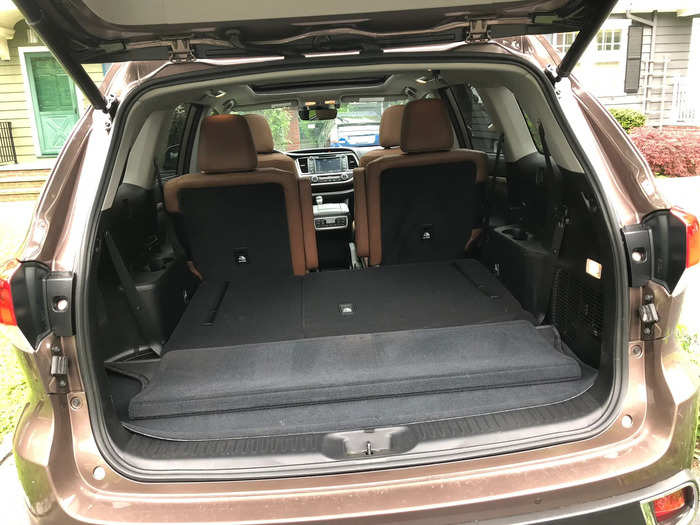
We found the cabin to be a really pleasant and friendly place to be. It's quiet, comfortable, and the interior ergonomics are pretty much spot-on. Material quality is very good and everything you touch feels really well put together. Everything about the Highlander's cabin gives off a reassuring sense of solidity.
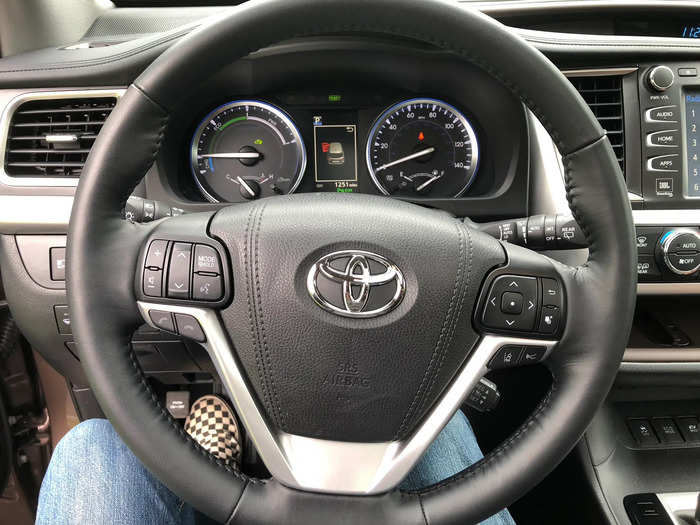
The second row of our test cars came equipped with a pair of optional captain's chairs. A bench seat is standard. The third row boasts ample room for a trio of children, but adults will find it a bit cramped back there.
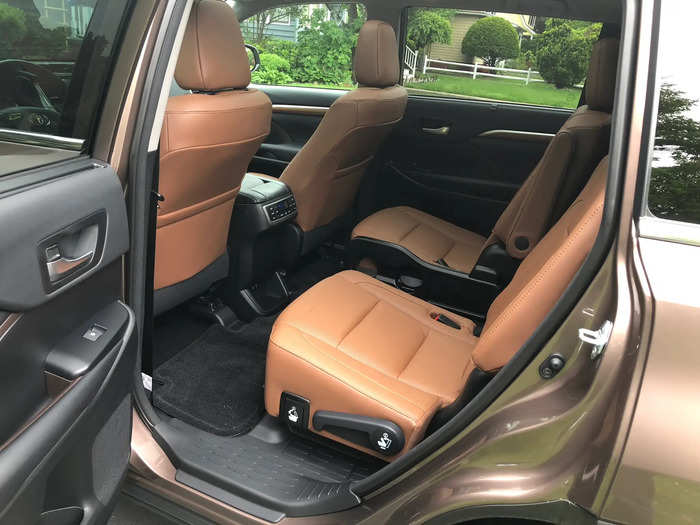
Under the hood of our Highlander SE is a 295 horsepower, 3.5-liter, naturally aspirated V6.
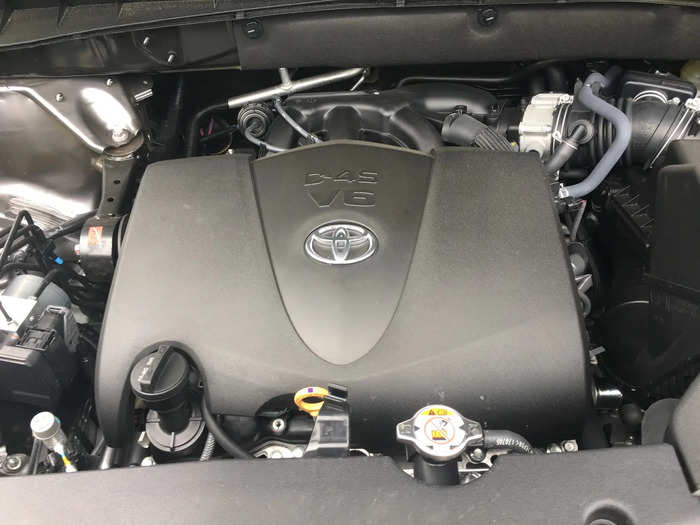
The Hybrid model adds Toyota's Hybrid Synergy Drive to the same V6, boosting horsepower to 306. The base Highlander is powered by a somewhat diminutive 185 horsepower, 2.7-liter, naturally aspirated four-cylinder.
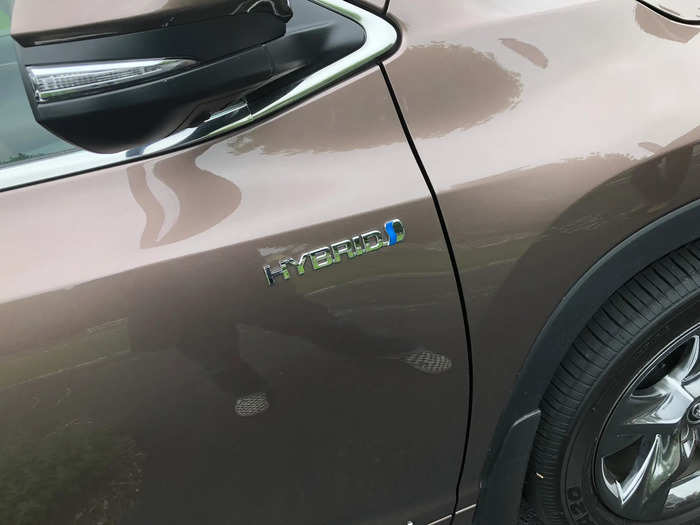
The four-cylinder is paired with a traditional six-speed automatic transmission while the V6 powered cars get an eight-speed unit. The hybrid models are equipped with a continuously variable transmission.
The 3.5 liter V6, shared with the Toyota Camry and Avalon sedans, is silky smooth. No one does naturally aspirated V6 engines quite as well as Toyota and it shows.
The Environmental Protection Agency projects fuel economy figures of 20 mpg city, 26 mpg highway, and 22 mpg combined for the SE. However, we struggled to break 20 mpg in mixed city and highway driving.
MPGs are better for the more expensive hybrid: a bit more than 30, combined
Our test cars came with an eight-inch touchscreen running Toyota's Entune infotainment system. Base Highlanders get a smaller 6.1-inch touchscreen. In spite of Toyota's work to improve the system's usability, Entune is not one of our favorites. It's perhaps the weakest part of the entire Highlander package.
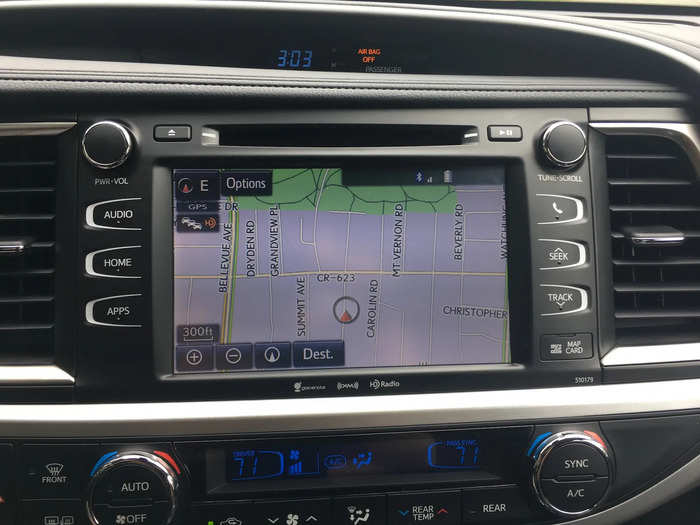
Most Highlander buyers aren't looking for an exhilarating driving experience or the latest tech. Instead, comfort, roominess, and reliability are likely to be much higher on the list. In that case, the Toyota Highlander delivers in spades.

I also sampled two Jeeps: The Grand Cherokee: a 2017 Hemi model, in Summit trim, priced at $54,000, and ...
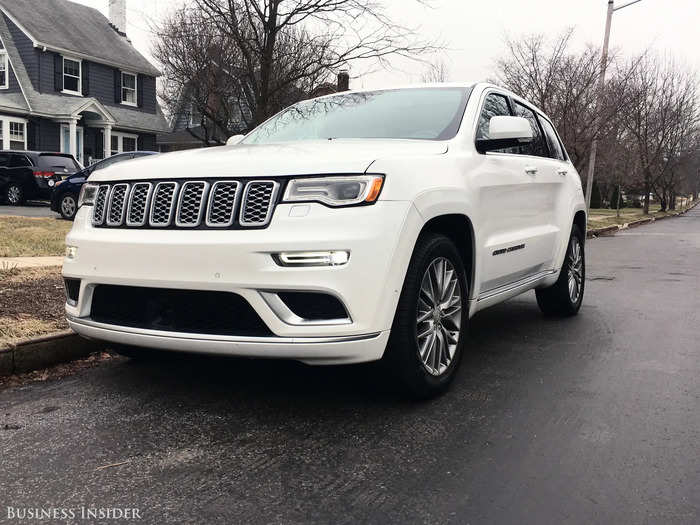
... A 2019 Cherokee Limited 4x4 starting at $33,620 with options and fees pushing the as-tested price to $40,040. The Billet Silver Metallic paint job was lovely.
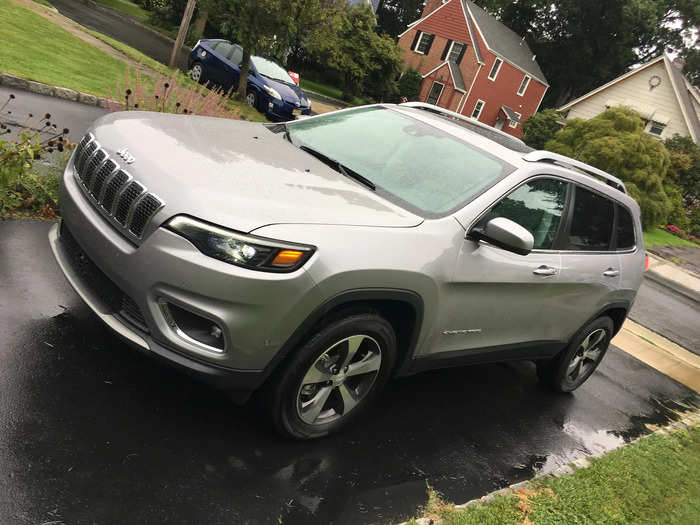
The Grand Cherokee is the more properly midsized of the two. Clad in a crisp white livery, our Grand Cherokee test car immediately impressed us with its imposing presence and attractive styling.
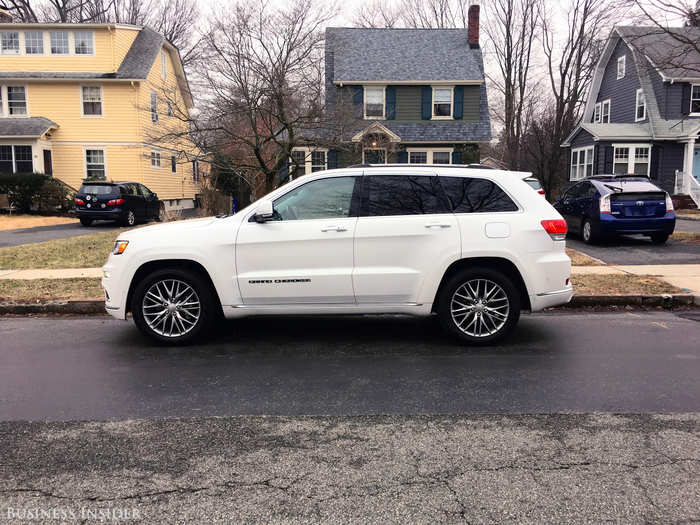
Our Summit edition model also came standard with Jeep's Quadri-Lift air suspension, which was our greatest gripe with the Grand Cherokee. The air suspension was poorly calibrated and proved incapable of absorbing even the smallest imperfections in the road.
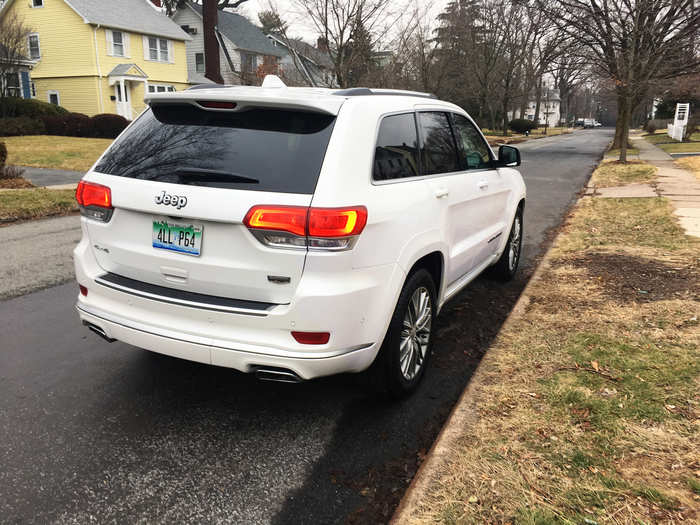
The Grand Cherokee had 36 cubic feet of cargo space, expandable to 68 cubic feet with the rear seats dropped.
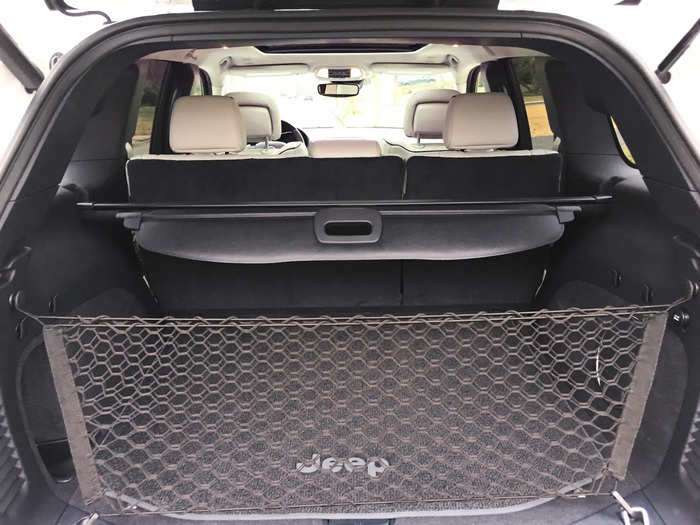
The cabin of our option-laden test car was lavishly appointed — for a Jeep at least— and proved to be a very pleasant place to be. There was a Nappa leather-wrapped dashboard, Laguna leather seats, and wood accents.
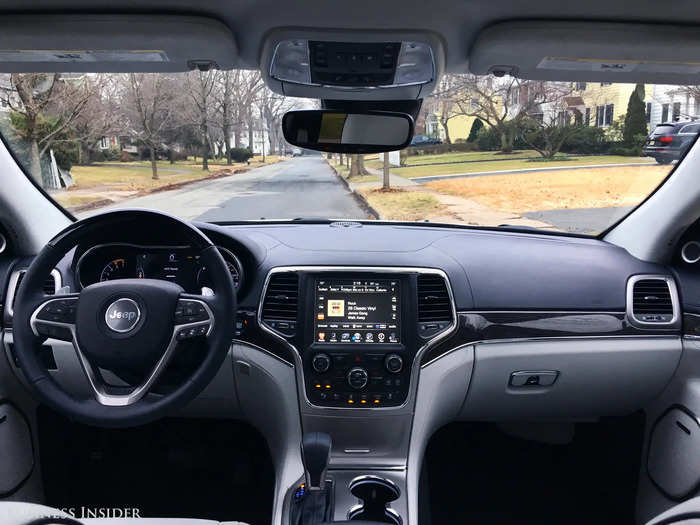
The rear bench seats provided decent legroom.
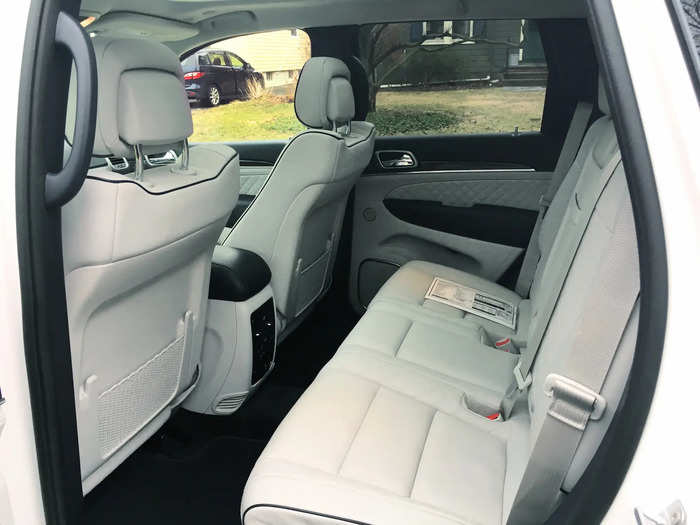
The 5.7-liter, 360-horsepower HEMI V8 gives the Grand Cherokee a muscle car punch off the line and an ear-pleasing rumble. Together with a slick-shifting ZF 8-speed automatic, we found the Hemi's unrelenting surge of acceleration infinitely enjoyable.
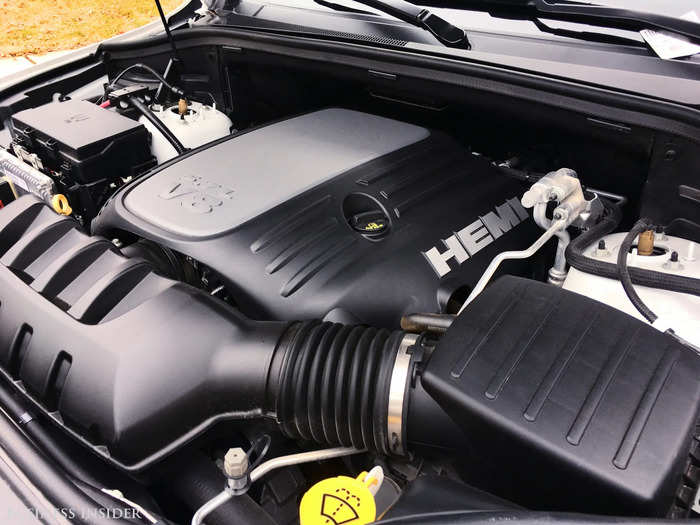
The center stack of the Grand Cherokee is dominated by an 8.4-inch touchscreen running Fiat Chrysler's UConnect infotainment system. Even though the system is crisply rendered and quick to react, its user interface can't quite match the quality of GM and VW/Audi's high-end systems.
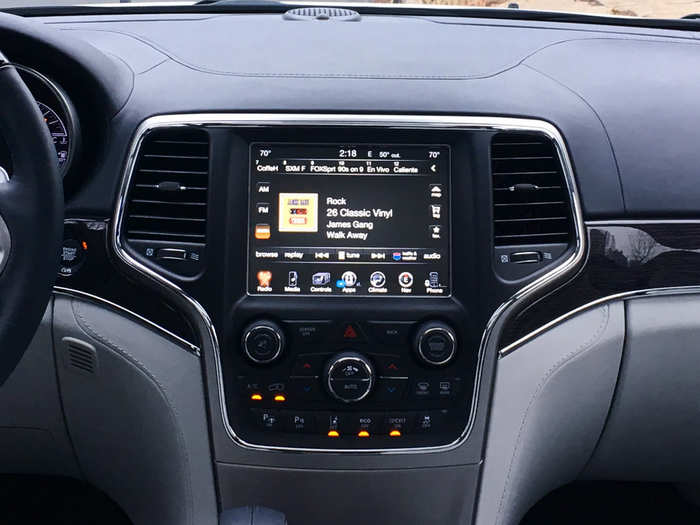
Overall, the 2017 Jeep Grand Cherokee isn't perfect. However, it's infinitely charismatic personality more than makes up for its shortcomings.
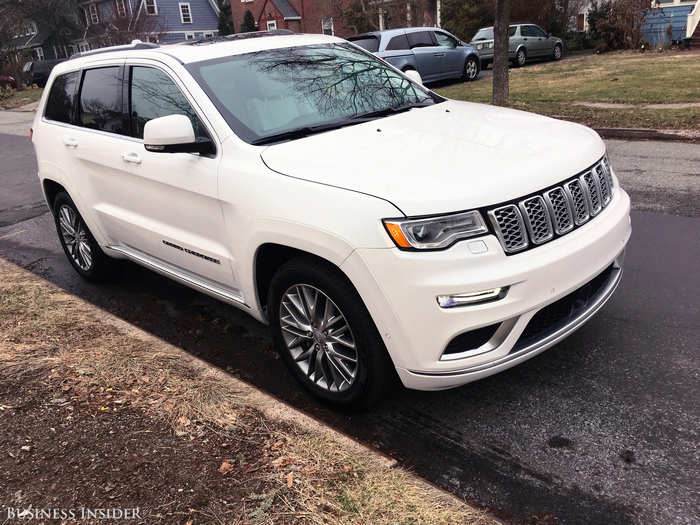
The Ford Explorer, in many ways, created the SUV craze. There's an all-new truck for 2020, but I last drove the legend back in 2017.
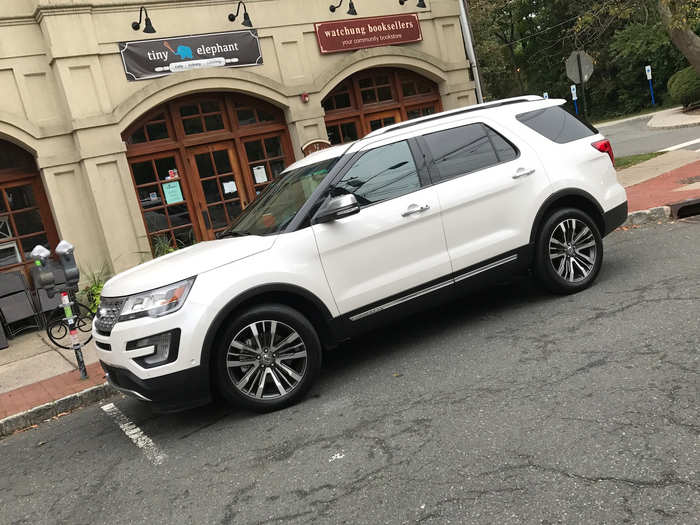
The 2017 Explorer arrived in "White Platinum" paint job, with a black leather interior. It was about $55,000, as-tested in a Platinum trim level.
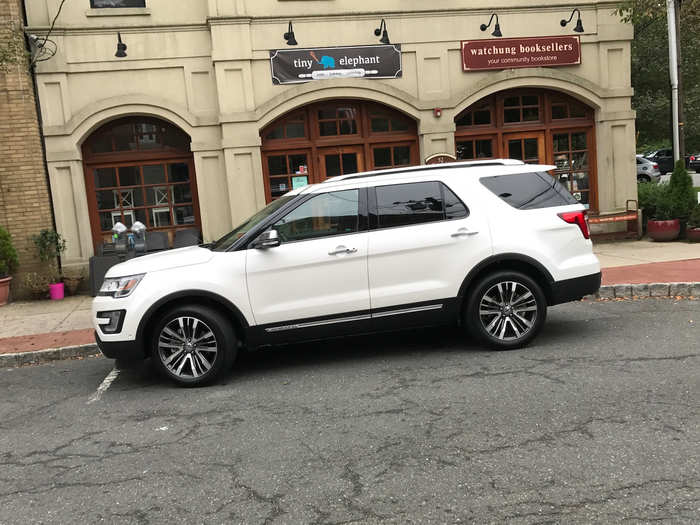
The design of this SUV has evolved over the years, becoming progressively sleeker. But this is still a full-size, three-row SUV that intended to max out passenger space and cargo capacity.
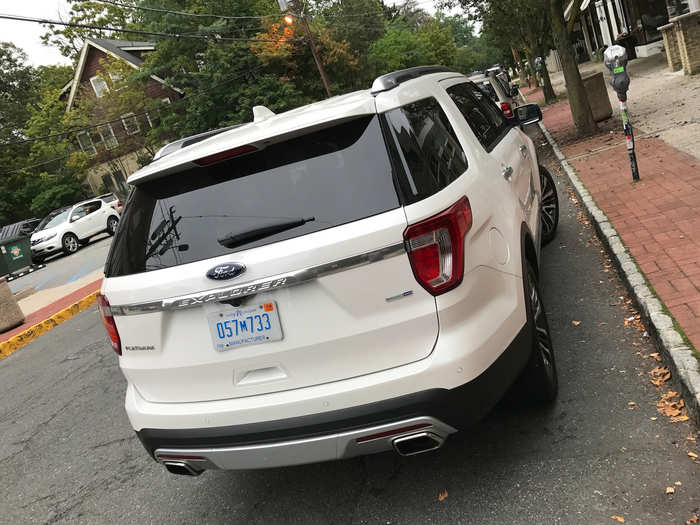
An all-new Explorer arrived for the 2020 model year.
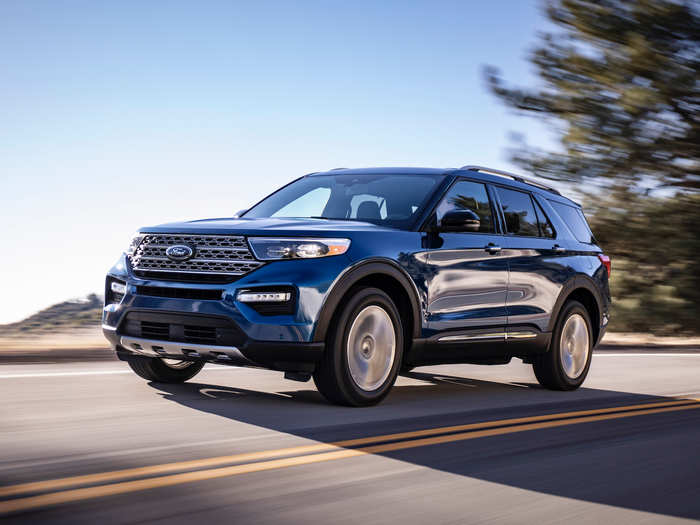
To handle all our stuff, we had to drop one of the third-row seats. But the cargo capacity was more than adequate for a quick weekend getaway that included two adults and three kids. That's a power liftgate, by the way.

The instrument cluster combined analog and digital elements, but it's a familiar tachometer-speedometer layout. The steering wheel has a nice hunk of wood trim at the top, and while steering is far from sporty, I also never labored to maneuver the two-and-half ton SUV.
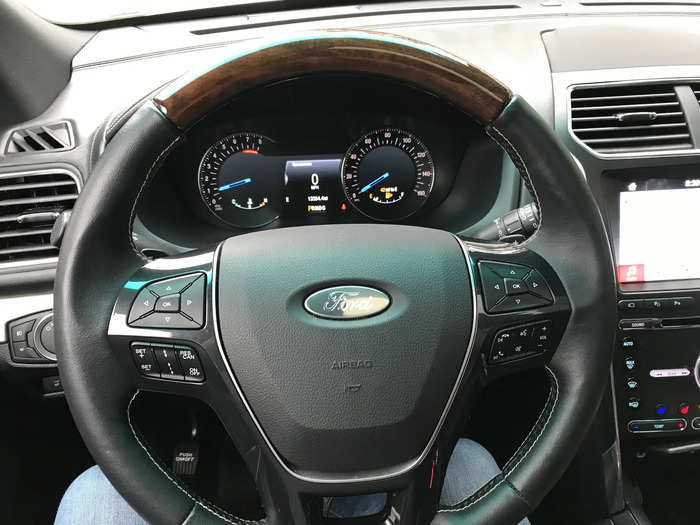
Ford seats are some of the most comfortable in the business. Our testers had massage functions for both driver and passenger. The stylish quilting is a nice touch.
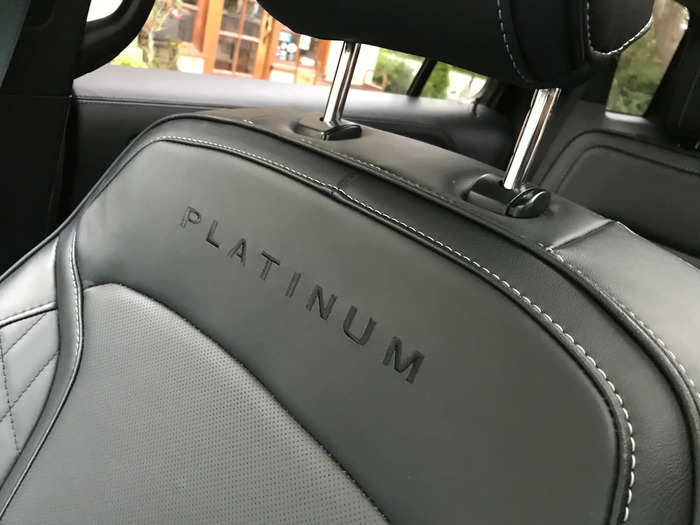
The Platinum is the top-of-the-heap Explorer trim level. Ours had a 3.5-liter, 365-horsepower EcoBoost V6 under the hood (that means turbocharged power). The transmission is a six-speed automatic that effortlessly sends the power to a four-wheel-drive system.
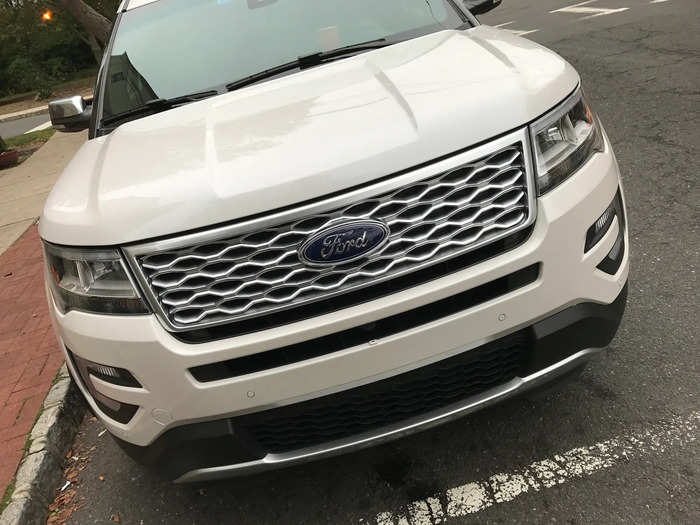
Fuel economy isn't great — 16 mpg city/22 highway/18 combined —but the EcoBoost V6 mimics V8 power, and don't forget that you can accommodate five adults and all their gear, even if the third-row passengers will be snug (smaller children won't).
Ford's SYNC 3 infotainment system was rolled out two years ago, and I've been warming up to it. The eight-inch touchscreen on the Explorer is small-ish, but it works well.
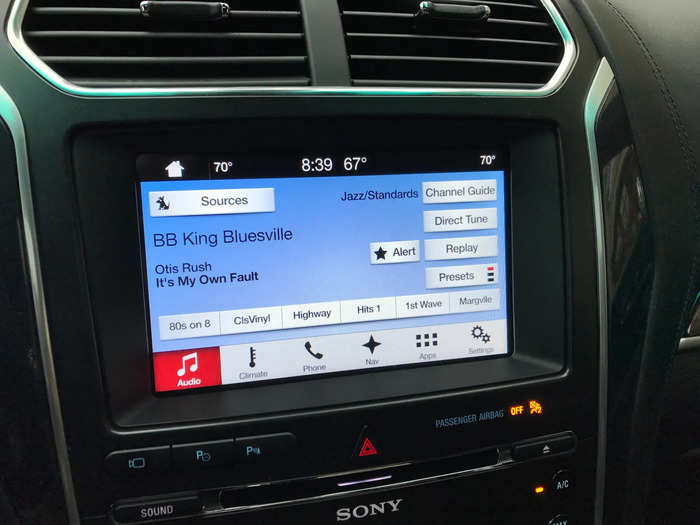
Navigation was reliable. Audio quality was also impressive, and you have Bluetooth connectivity, as well as AUX and USB ports. The voice-recognition system got mixed up at one juncture of our journey, but in general, it worked well.
Two decades is a long time to keep it real in the SUV game. But the Explorer could justifiably be called better than ever. And the all-new 2020 edition is an SUV that I'm looking forward to reviewing.
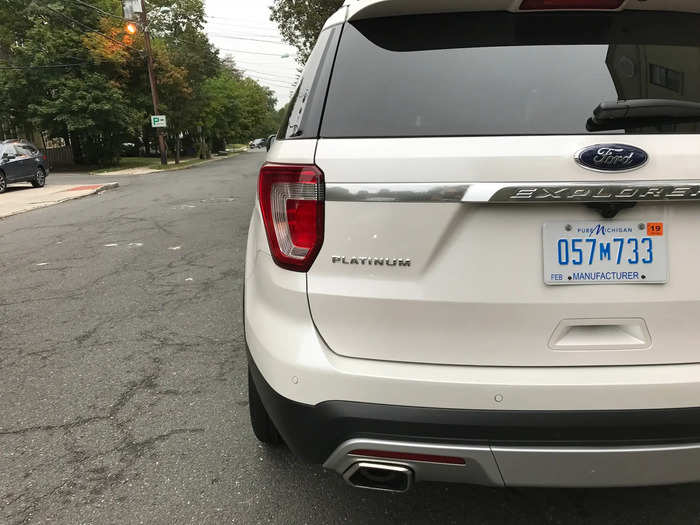
The GMC Acadia Denali is the most premium midsize SUV I've tested that can also handle serious off-roading and towing. Denali is GMC's upscale sub-brand.
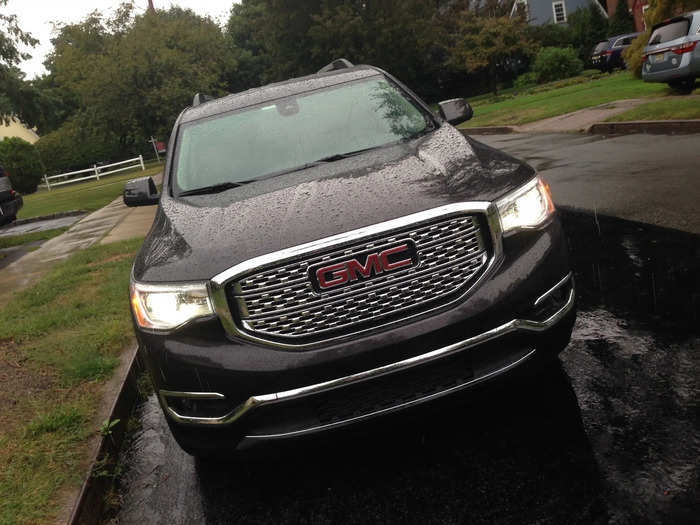
Our 2017 GMC Acadia Denali came with all-wheel drive. This maxed-out mid-size crossover, which shares a platform with the Cadillac XT5, stickered at $52,185, with numerous options. It is possible, however, to get a base Acadia for around $30,000.
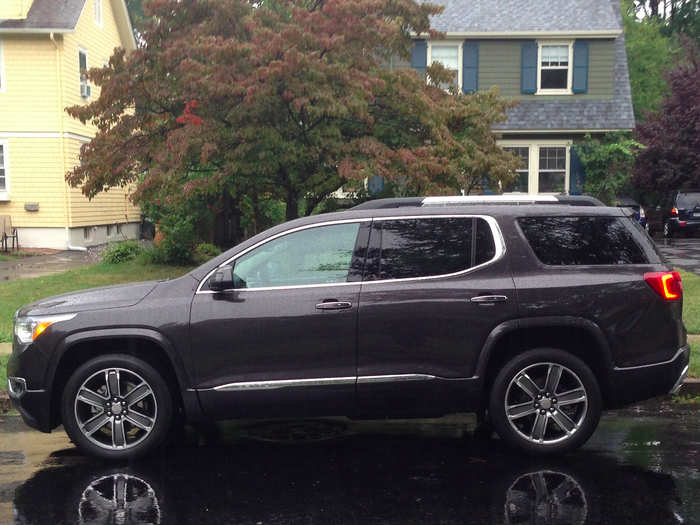
The Acadia Denali wore its 'Iridium Metallic' black paint job quite well.
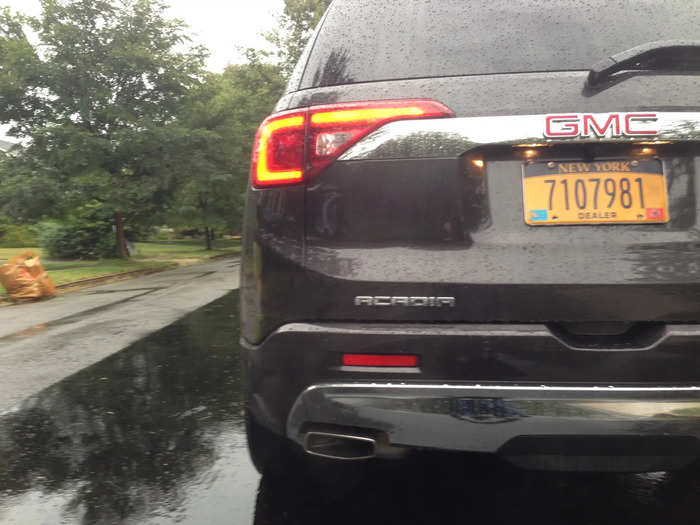
Cargo capacity is perfectly reasonable. We transported five people (two adults and three kids) using the three-row seating configuration and had enough room for gear. We also had room to bring back some extra stuff at the end of a roughly 400-mile round trip.
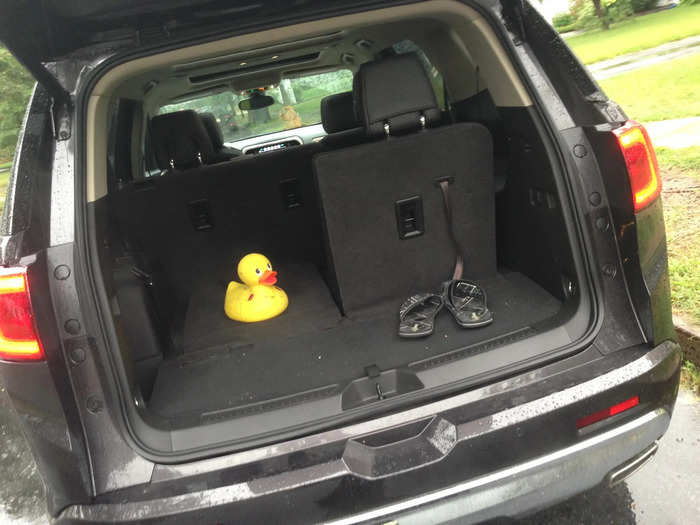
Purposeful leather, brushed metal, and a simple analog-style instrument panel present themselves to the driver. The overall impression is very masculine. And that makes sense, because GMC is aiming this vehicle, in this upscale trim level, at male buyers.
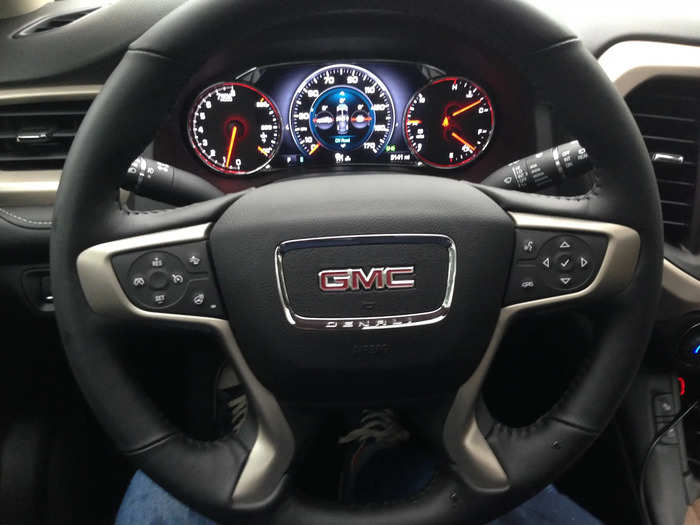
The Acadia Denali gets a 3.6-liter V-6 engine, making 310 horsepower. The fuel economy is a claimed 18 city, 25 highway, 20 combined, which isn't stunning, but you can haul around seven humans with this thing and tow a small boat.
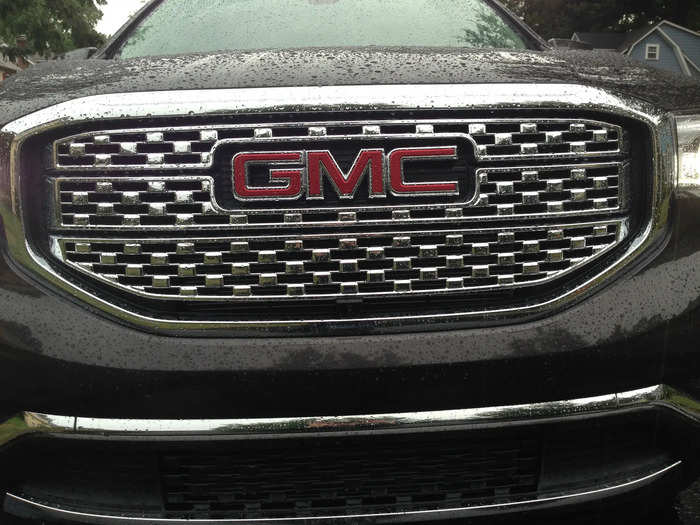
The second row of seats is roomy, but the third row is pretty snug.
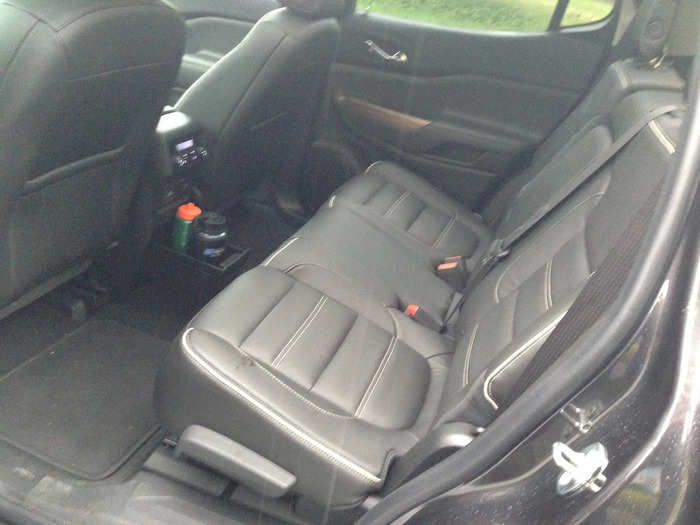
The infotainment system is operated with this 8-inch center touch screen and via controls on the steering wheel, as well as through voice commands. Apple CarPlay and Android Auto are available. Combined with OnStar, 4G LTE, and excellent ease-of-use, I think GM's infotainment systems are currently the best on the market.
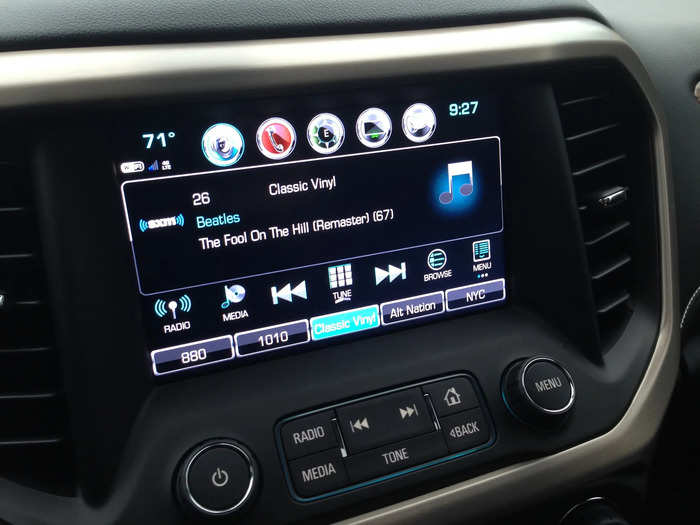
The Acadia Denali doesn't approach its segment with a lack of confidence. It's almost as if this SUV has nothing to prove, but goes ahead and proves it anyway. This is stealth luxury. And for the 2020 model year, the Acadia Denali got a refresh, with an updated front fascia.
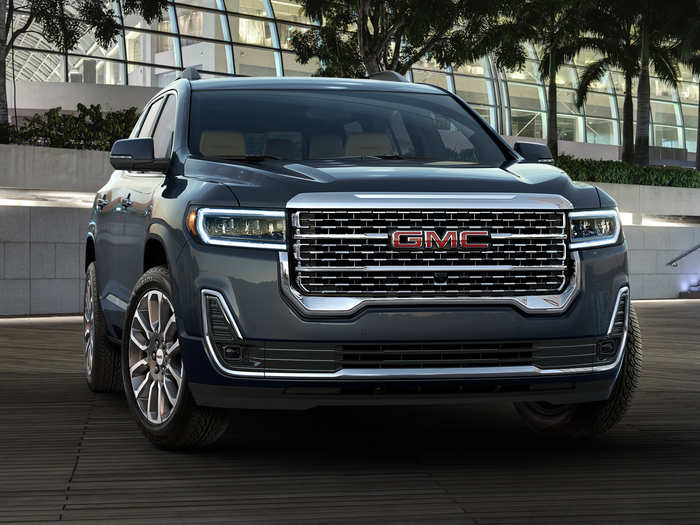
The Kia Telluride is a brilliant upstart. It's the best midsize SUV I've driven thus far this year, and it's rapidly distinguished itself as being among the best choices in the segment.
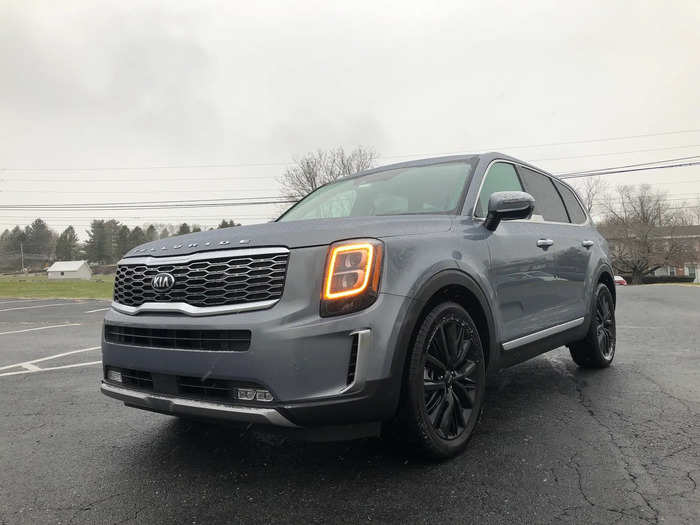
The Kia Telluride I tested was the 2020 model year of the new three-row SUV, outfitted in "everlasting silver." Price? For a three-row SUV in top-spec SX trim, we're talking $47,310.
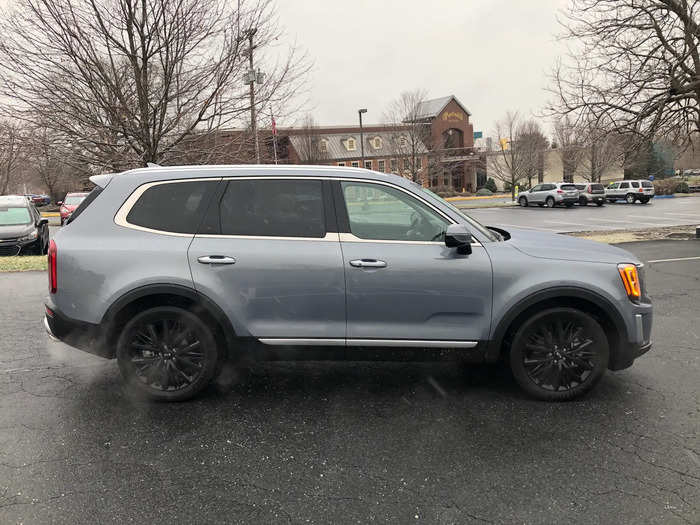
My tester was crammed with technology and, in the SX trim, was the most premium offering, interior-wise, that Kia sells. But the platform is pretty straightforward: three rows, a naturally aspirated V6 making 291 ponies, and a smooth, brisk eight-speed transmission.
The weakest part of any SUV design is the rear end. But that's not the designer's fault. There's only so much one can do with an upswinging barn door.
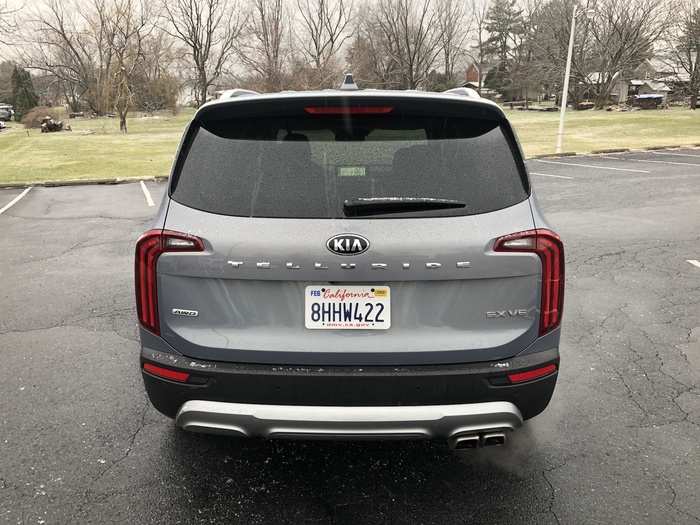
Telluride is, of course, an upscale ski town in Colorado. It was a bold decision for Kia to co-opt the implicit branding — but the vehicle comes through!
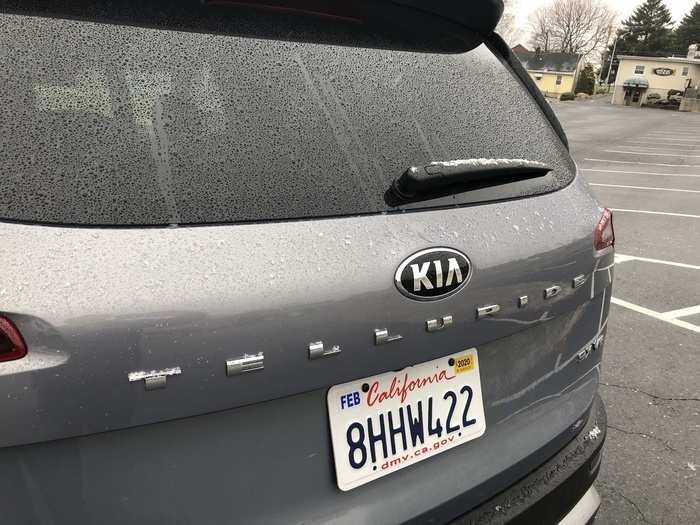
With the third row deployed, the Telluride has 21 cubic feet of cargo space. That's OK, but, as with most three-row SUVs, a bit meager given the passenger-to-luggage-to-cargo-space ratio that this type of vehicle usually confronts.
The maximum cargo capacity, however, is almost 90 cubic feet.
I noticed but one "problem": a bit of buzz from the 291-horsepower engine under hard acceleration in sport mode. But just a bit. The all-motor (no turbos!) V6 communicated blissfully with the eight-speed automatic and the all-wheel-drive system.
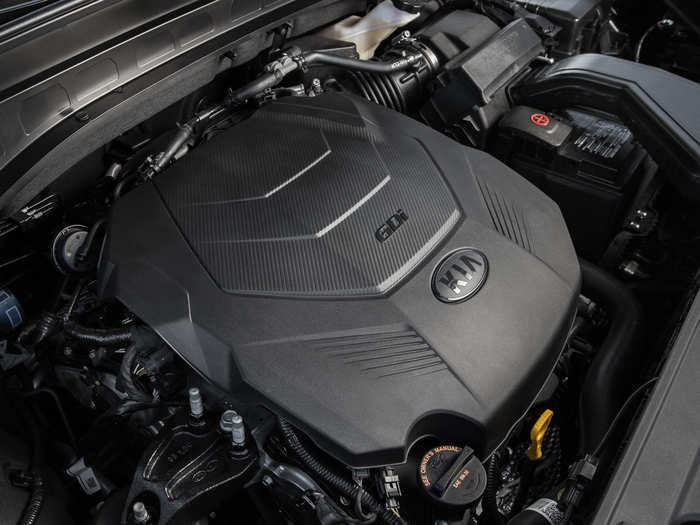
The Telluride's interior isn't luxurious, but it isn't mass-market. For most consumers, it's pure Goldilocks: Just right.
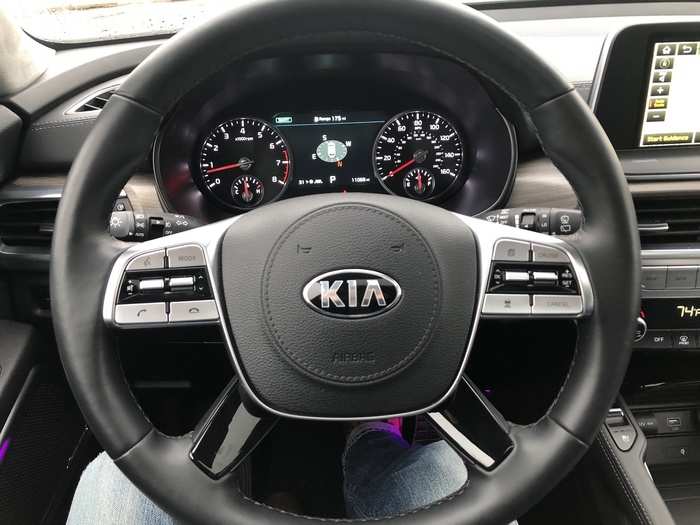
The multifunction steering wheel provides access to Kia's semi-self-driving system, which adds autosteer to adaptive cruise control and a suite of driver-assist features.
I sampled the "smart" cruise control and found it to be just as good as everything else on the market, including 90% of Tesla Autopilot. The Telluride smoothly steered itself into freeways curves, and while it's certainly not a hands-free technology, it relieved some stress on my 200-mile round-trip journey.
Three-row SUVs are, on one level, an alternative to minivans. As a former minivan owner, I get it and I don't. Minivans do everything better. But the Telluride does three rows as well as I've seen in an SUV.

Kia is selling what I consider one of the top infotainment systems on the market. The 10-inch central touchscreen is nearly perfect, and the use of old-school buttons, knobs, and switches is welcome.
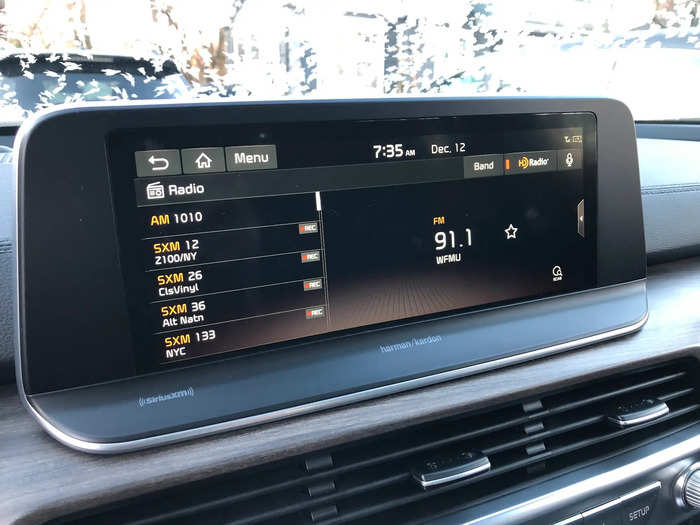
The system integrates device-pairing, Bluetooth, and navigation. It also offers a dedicated charging port (distinct from the USB data interface), as well as wireless inductive charging.
Kia, I gotta hand it to ya: You're killing it, and the Telluride is the latest victory.
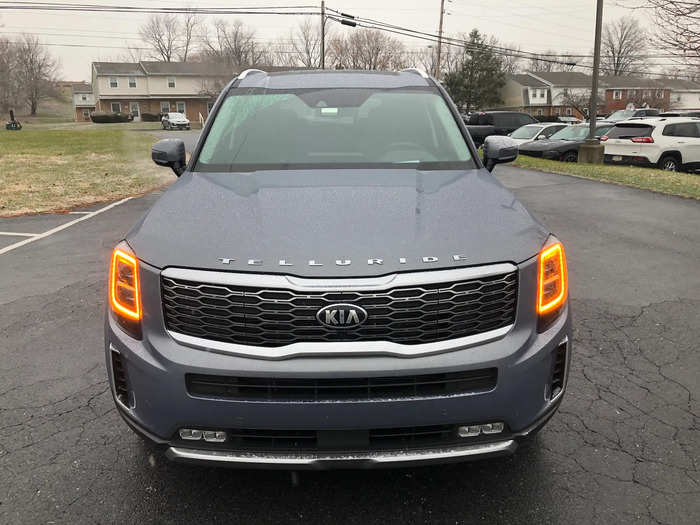
The Subaru Ascent proved, at long last, that the anti-SUV could do a proper midsize 'ute without compromising its principles.
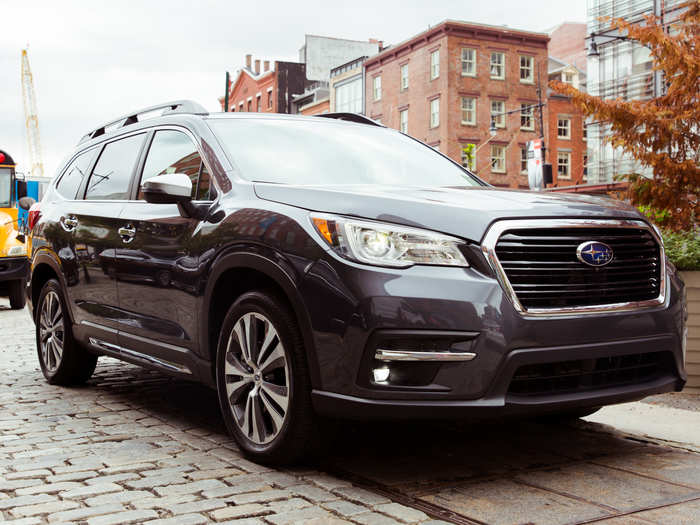
The base 2019 Subaru Ascent starts at $31,995, while our top-of-the-line Ascent Touring starts at $44,695. With fees, our car carried an as-tested price of $45,670. Aesthetically, the Ascent has a heavy dose of Subaru corporate-styling DNA.
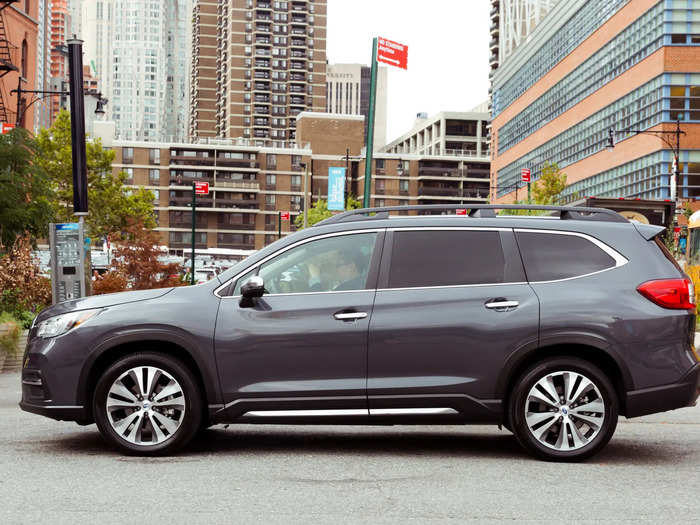
In the back, the Ascent features dual exhausts and a power liftgate. We were fans of the sculpted tail lights.
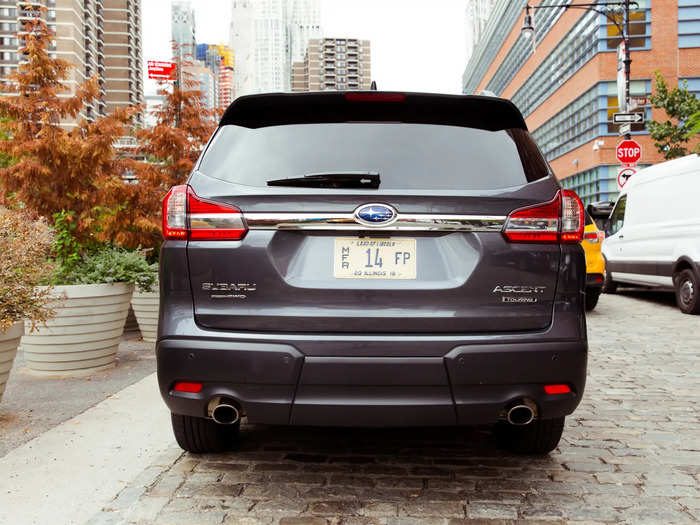
You'll find 17.5 cubic feet of cargo room behind the third row. With the third row folded, cargo capacity expands to 47 cubic feet. The maximum cargo capacity behind the first row is 86 cubic feet.
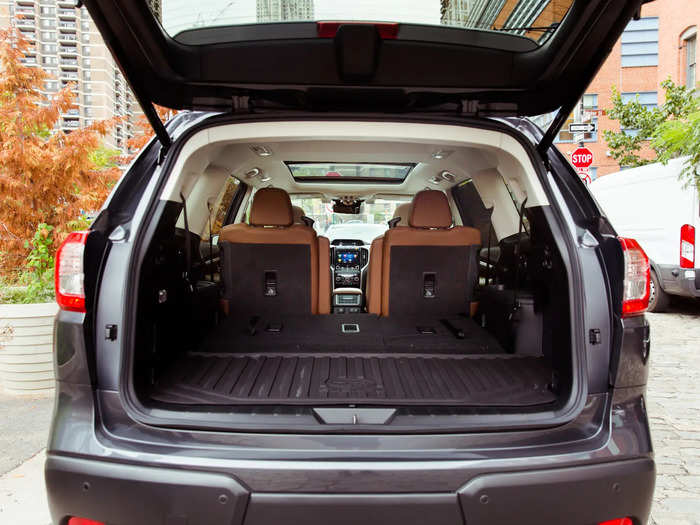
In front of the driver is a nicely contoured leather-wrapped steering wheel complete with paddle shifters. Beyond that is a set of traditional analog gauges flanking a digital information display.
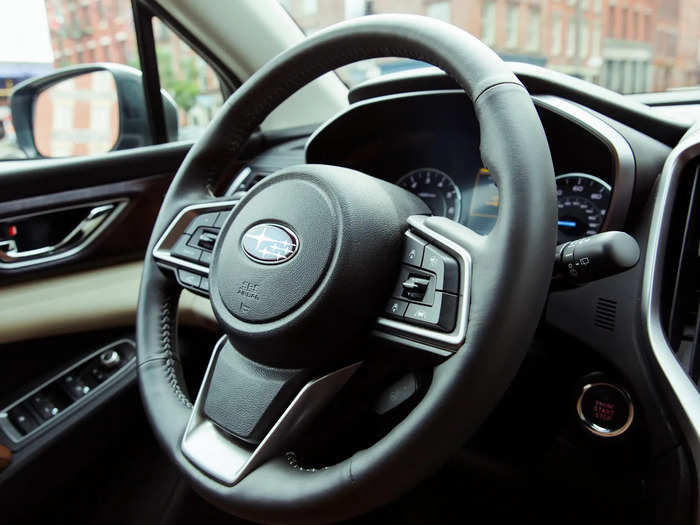
Inside, the interior of our top-spec Touring model really impressed. The cabin is traditional Subaru — very conservative but effective and easy to use. Ergonomics are terrific, with no oddly placed buttons or knobs to report.
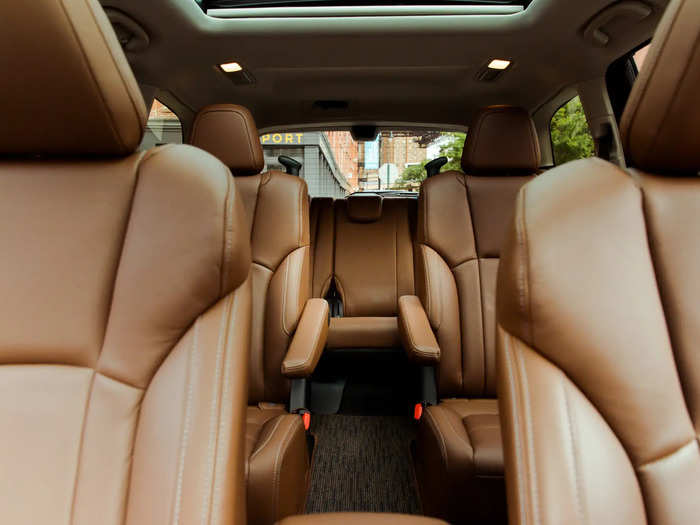
Our Ascent test car came equipped with the optional second-row captain's seats. Lower-spec models are available with a second-row bench that gives the Subaru room for up to eight. The second-row captain's chairs are comfortable and supportive. They are also mounted higher to give the occupants a commanding view of the road. A cavernous 38.5 inches of legroom are available for second-row passengers.
Third-row passengers have 31.7 inches of legroom. Adults can fit back there and be comfortable on trips around town, but these seats are best reserved for children.
Power for all versions of the Ascent comes from a new 2.4-liter, turbocharged, horizontally-opposed, four-cylinder engine. The "flat" or "boxer" turbo four produces a stout 260 horsepower. It's mated to a continuously variable transmission and Subaru's signature Symmetrical all-wheel-drive system.
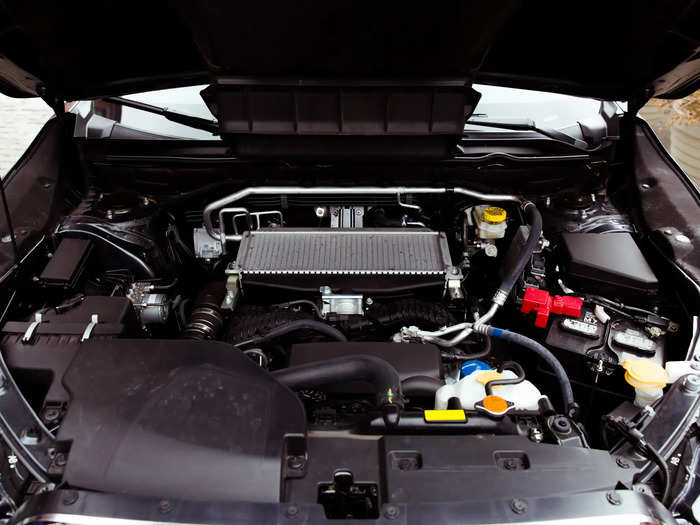
The center stack is dominated by an optional 8-inch high-definition touchscreen running the latest variant of Subaru's Starlink infotainment system. The Ascent comes standard with a 6.5-inch unit.
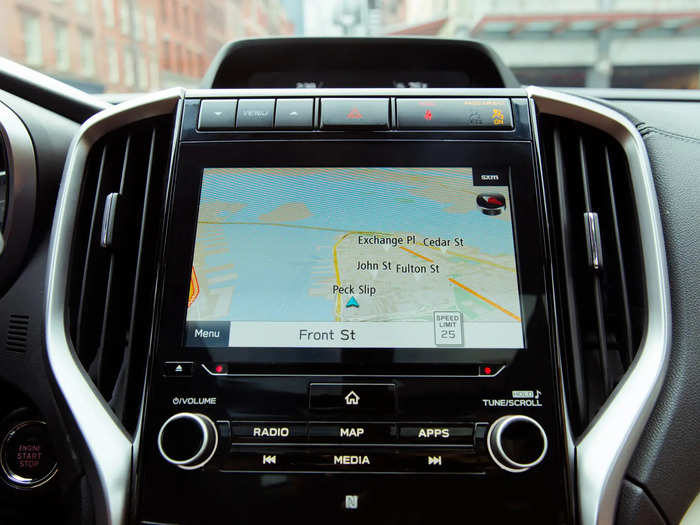
Subaru's Starlink system is simple and intuitive. It features a solid array of app content as well as 4G LTE Wi-Fi hotspot capability, built-in navigation, and emergency roadside assistance. There's also Apple CarPlay integration.
Subaru really needed to get the Ascent right. And boy did they nail it. The 2019 Subaru Ascent wowed us with its user-friendly design, its refined cabin, a cornucopia of standard safety features, infotainment tech that works, and a gutsy turbocharged engine.
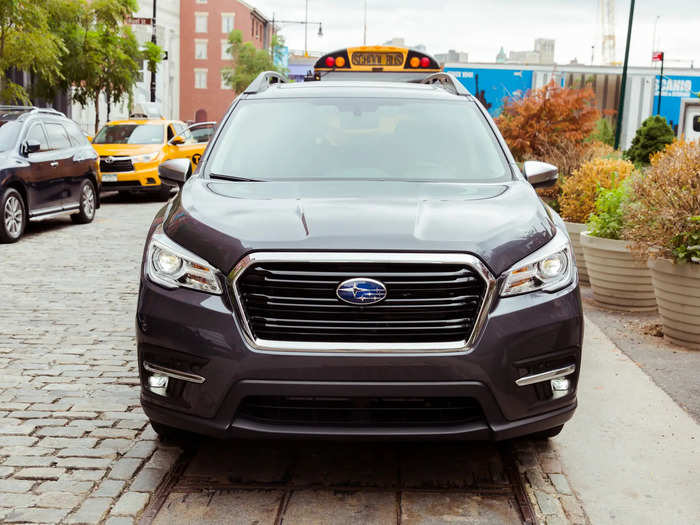
The VW Atlas is the biggest vee-dub money can buy in the US. It's also a superb effort from the Germans.
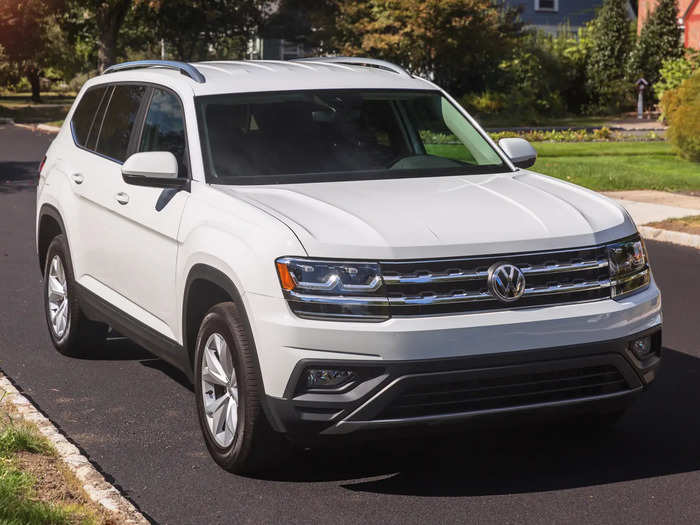
In 2017, we spent a week with a top-of-the-line 2018 Atlas V6 SEL Premium with 4Motion all-wheel-drive that cost $49,000.
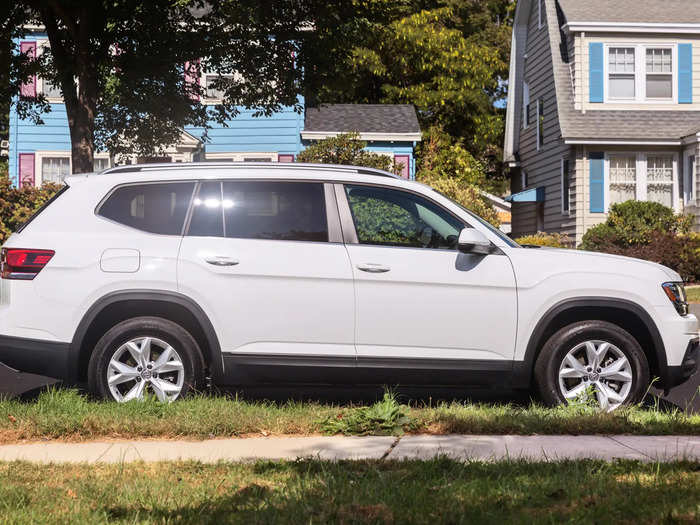
We were so impressed with the Atlas that we brought it back for a second tour of duty just to make sure we didn't miss anything. This time, we got our hands on a mid-grade Atlas V6 SE with 4Motion that cost a tad under $40,000. The base front-wheel-drive, four-cylinder Atlas S started at $30,500.
The first thing you notice with the Atlas is that it's big. While VW has traditionally gone for svelte and sleek, the Atlas' blunt front fascia exudes old-school American truck. It's more Chevy Tahoe than VW Touareg.
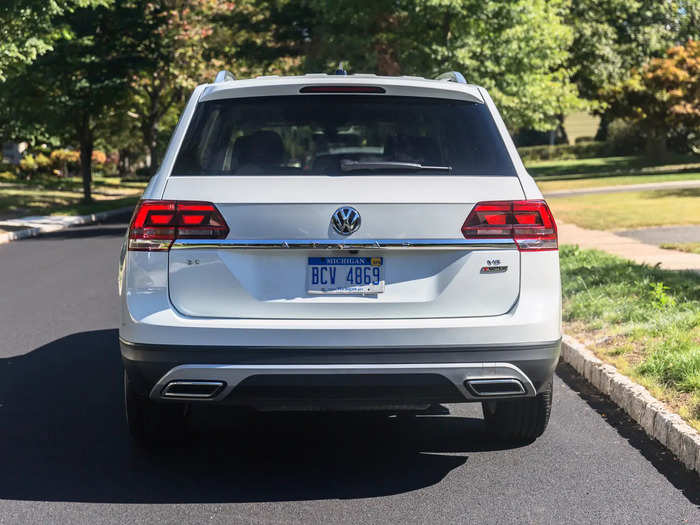
With the third row folded away, the Atlas has a stout 55.5 cubic feet of cargo room, as seen here in this manufacturer's photo of the SUV.
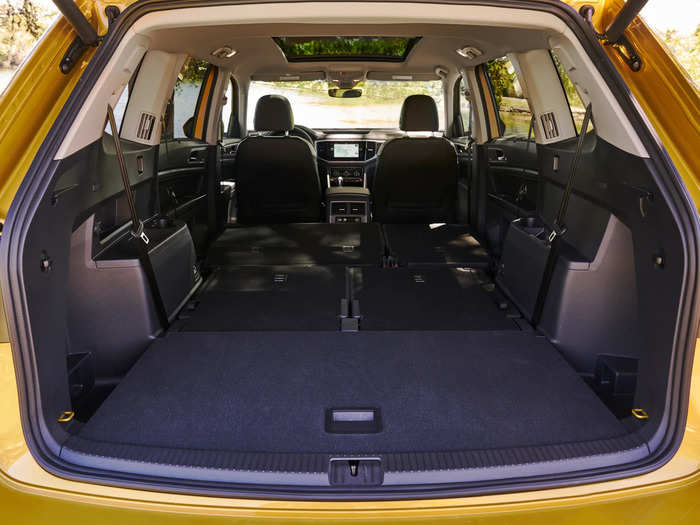
Step inside the Atlas and VW offers up all of the American family SUV must-haves.
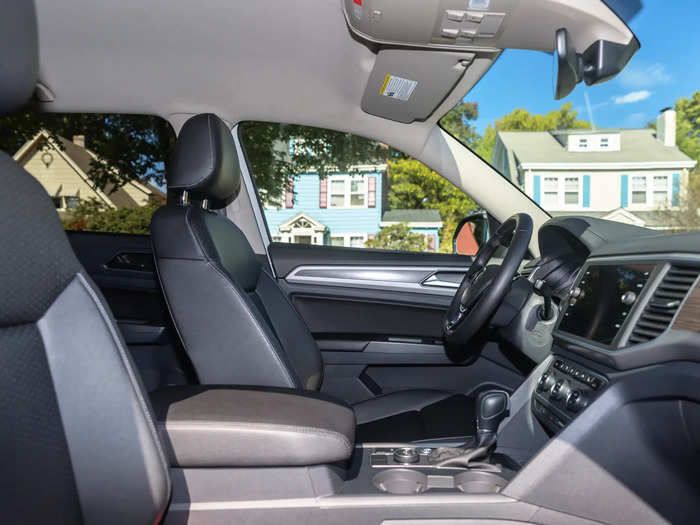
Our only complaint is the interior fit and finish of the Atlas.
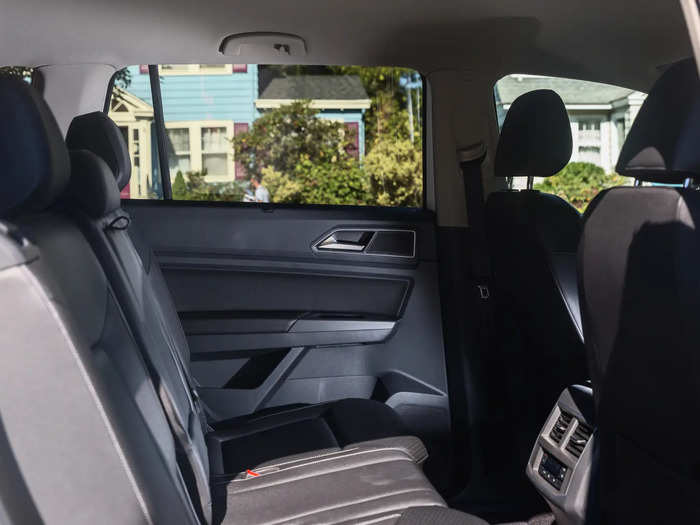
Although the materials were generally of a good quality, a few trim pieces of our new test cars already felt worn. Not a good sign for a vehicle that needs to survive the rough-and-tumble life of a family hauler.
Under the hood, the Atlas is available with two engine options. Base models come with a 235 horsepower version of VW's EA888 2.0-liter, turbocharged, inline-four-cylinder engine. Higher spec versions like our two test cars came equipped with 3.6-liter, 276 horsepower, VR6 narrow-angle V6 engine.
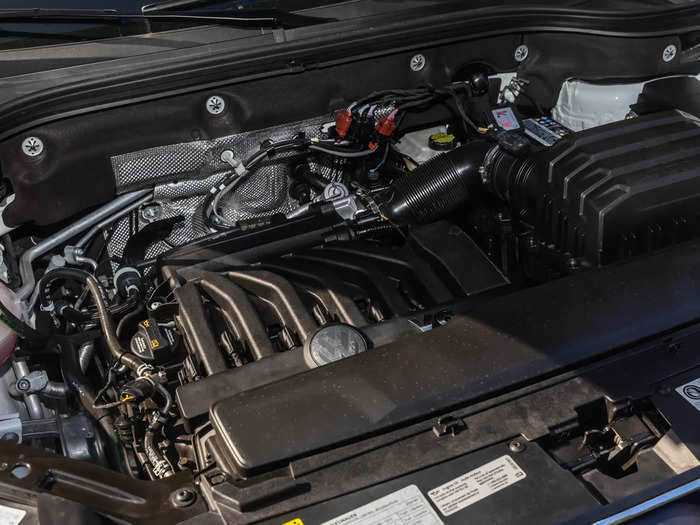
Both engines are matched to an 8-speed automatic. In our V6 test car, the 8-speed delivered smooth and responsive shifts.
Our Atlas was equipped with an 8-inch touchscreen running VW's latest MIB II infotainment system. Base models get a 6.5-inch screen. MIB II is quickly becoming one of our favorites.
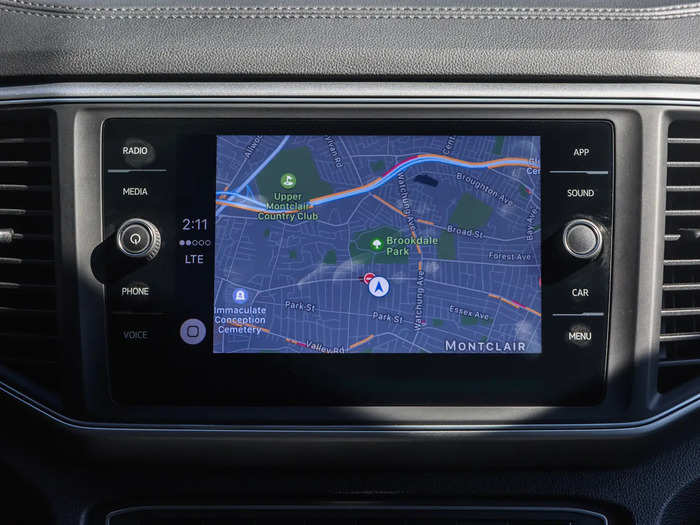
Embracing Americana is the smartest thing Volkswagen has done in a long time. While it hasn't completely shed its German heritage, the company finally delivered an off-roader with the power, space, and practicality which caters specifically to the largest and most lucrative SUV market in the world. AND the Atlas has been updated for the 2021 model year.
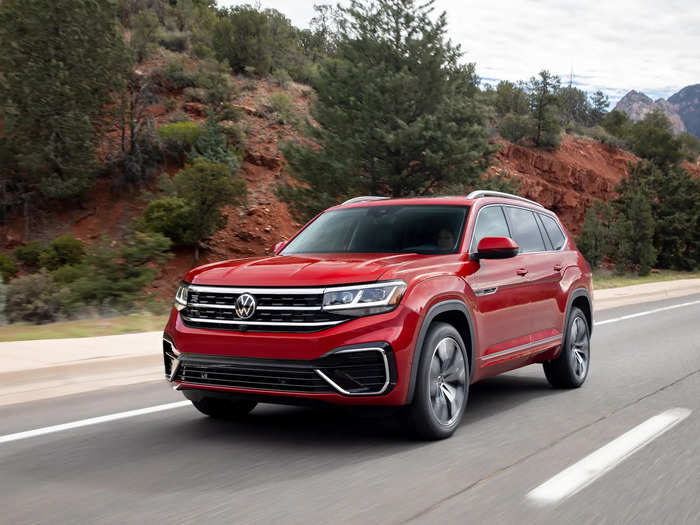
The Chevy Blazer brought back the nameplate with some aggressive styling. My 2019 model-year tester, with a "Red Hot" exterior, came in at just over $48,000.
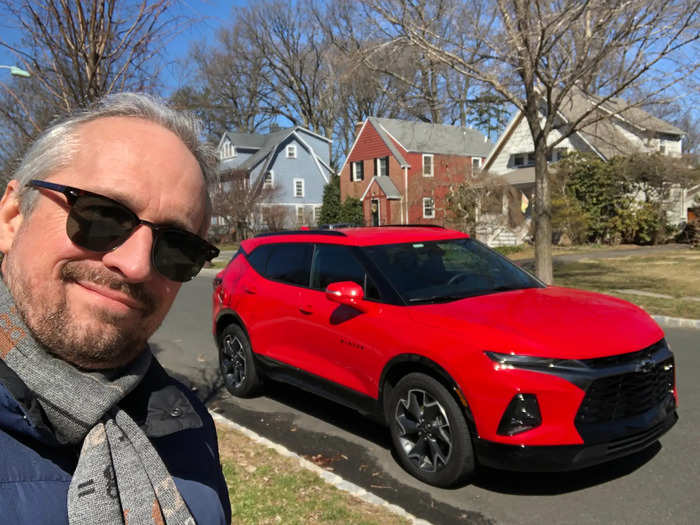
The Blazer's sort of Lexus-y design grew on me over time. But it's pretty far from being a rough-and-ready, bare-bones SUV. It's supposed to remind folks of the Camaro.
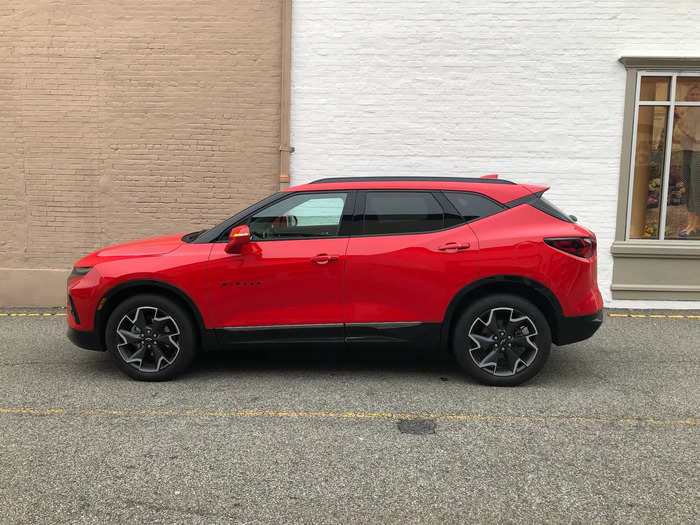
No four-wheel-drive here, but an all-wheel-drive system that should be able to handle moderately foul weather and the odd snowstorm.
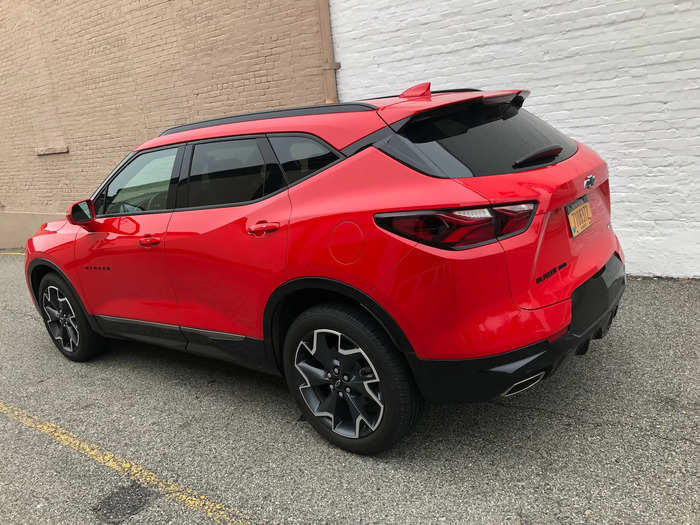
There are 30 cubic feet of cargo space available once you open the gesture-activated handsfree power liftgate. Drop the rear seats and you have a capacious 64 cubic feet.
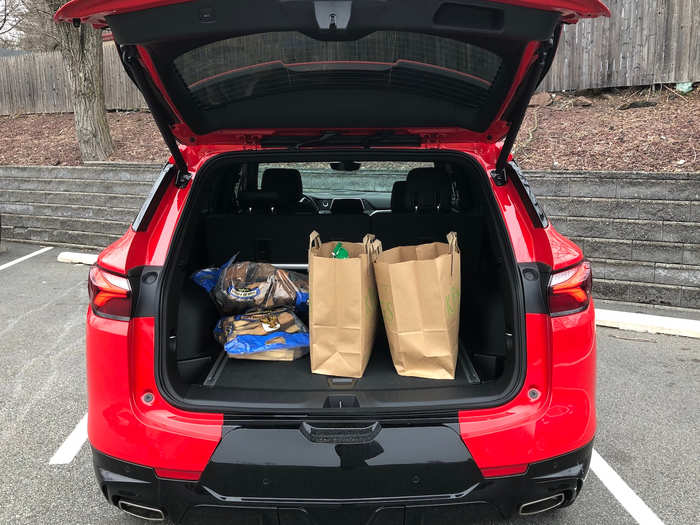
The "Jet Black" interior was roomy. The front seats were heated and cooled.
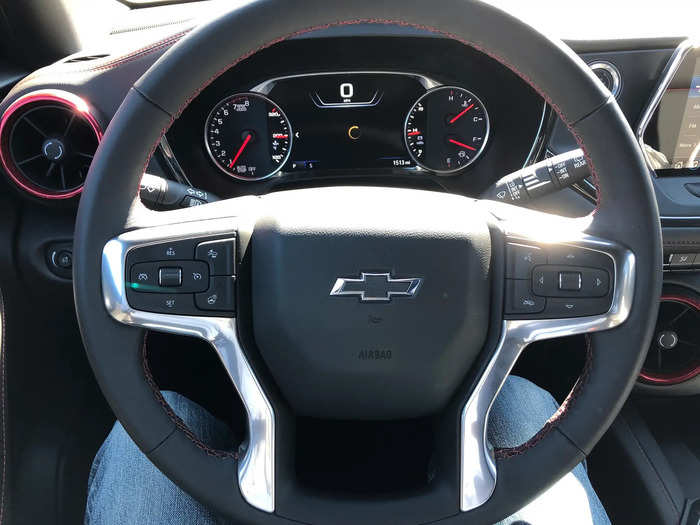
The rear seats are a bench design, but they also provide ample room for adults.
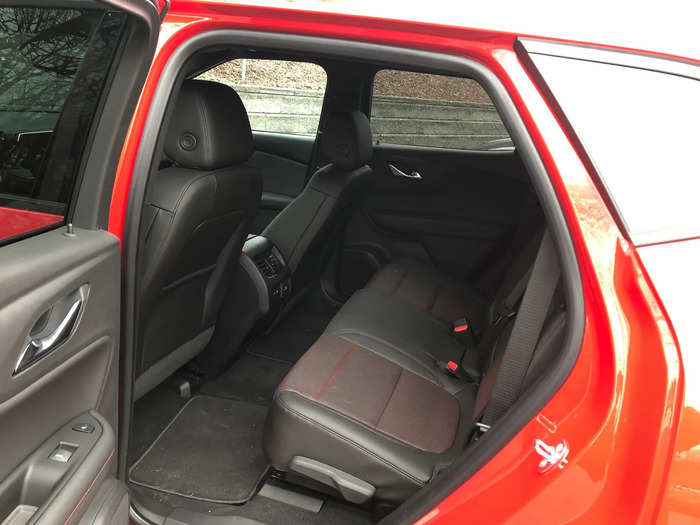
That's a 3.6-liter V6 engine, making 305 horsepower. It doesn't look like much, and the fuel economy isn't great (18 mpg city/25 highway/21 combined). You can opt for a 193-horsepower four-banger if you'd like better MPGs. Power is routed to the wheels through a capable nine-speed transmission.
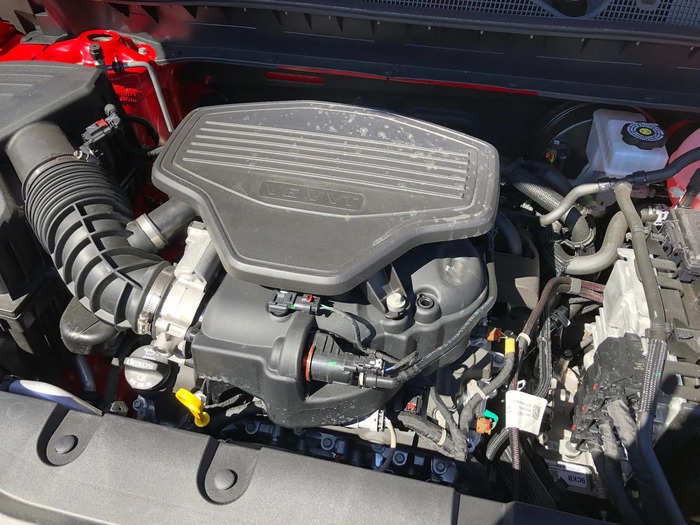
The infotainment system is Chevy's superb, responsive IntelliLink. All functions, from navigation to Bluetooth device-pairing, are excellent. You have USB/AUX ports and OnStar 4G LTE WiFi connectivity. The Blazer also has wireless charging, and my tester was outfitted with a wonderful Bose premium audio system.
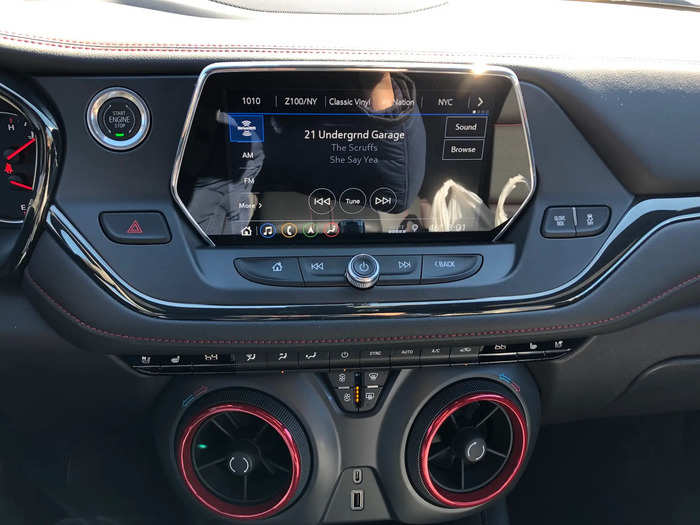
To be honest, I hated the new Blazer until I got it out on the highway and let the V6 rip. The 0-60 mph dash passed in about six seconds, and I'm a sucker for turbo-free V6 punch when cruising in a straight line or maneuvering around semis. The power is V8-mellow without the lurches and untapped reserves.
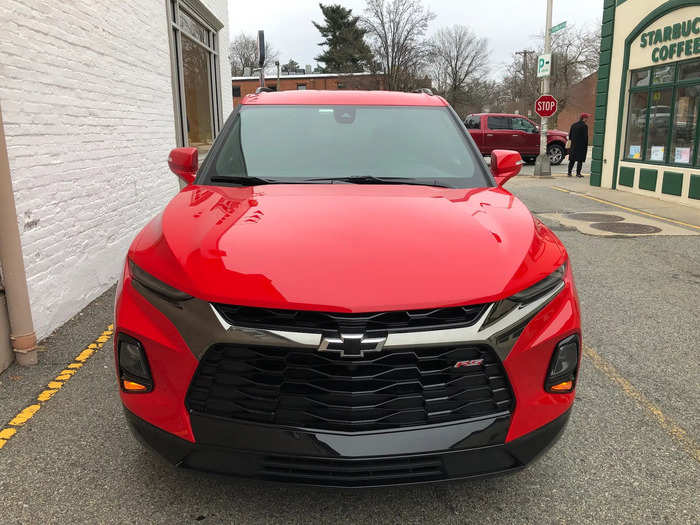
The Buick Enclave Avenir is the upscale version of the SUV that saved the brand in the US. Our tester stickered at about $59,000. It was very nicely equipped, with the Avenir goodies and all-wheel-drive. The base Enclave can be had for around $40,000.
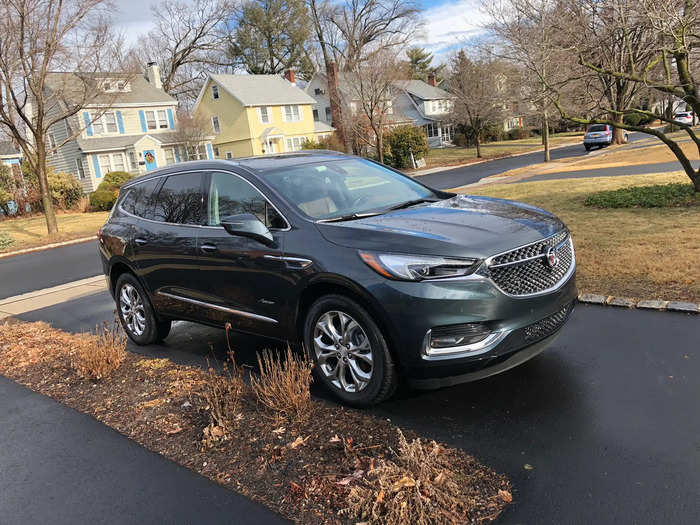
Buick completely redesigned the vehicle for the 2018 model year, and in a new move, created a sub-brand for Buick: Avenir.
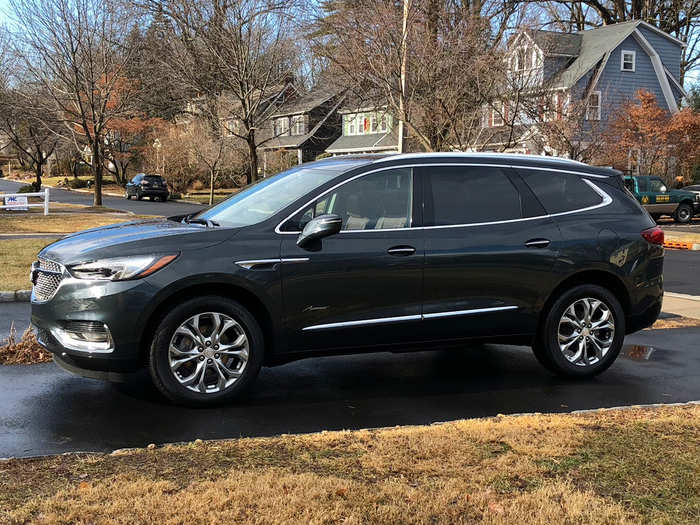
The idea was to mirror what sister brand GMC had done with Denali, which was to tap into a higher level of the near-luxury market. Design-wise, the Enclave is elegant, well-tailored — it doesn't advertise its bulk, and it doesn't come off as aggressive.
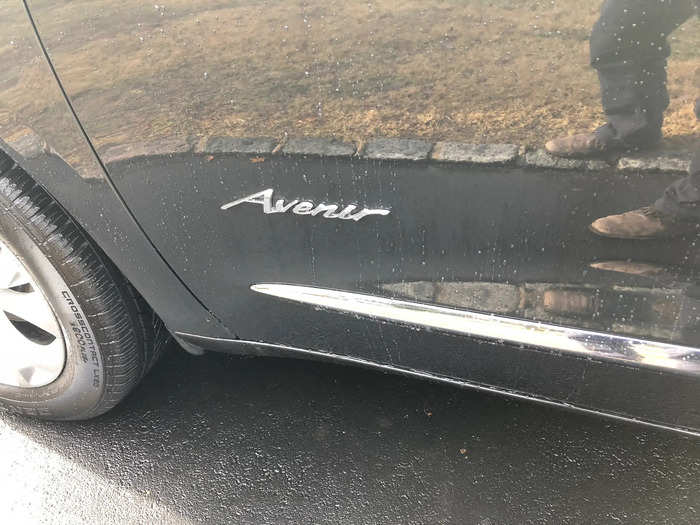
Cargo capacity is 24 cubic feet, but drop the seats and you have 98 cubic feet, which is a veritable pickup truck bed.
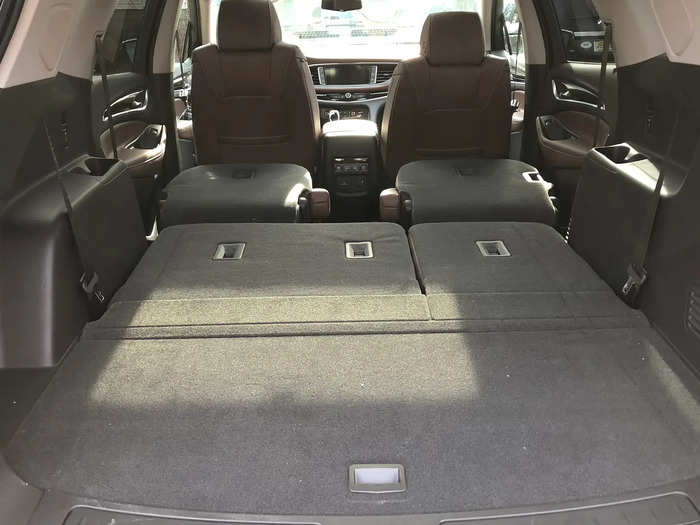
The 310-horsepower, 3.6-liter V6 is a dandy motor, delivering a 0-60 mph dash of about six and a half seconds. The nine-speed automatic is pretty smooth-shifting, and fuel economy is fine for a large, heavy vehicle that can tow 5,000 pounds. if properly equipped: 17 mph city/25 highway/20 combined.
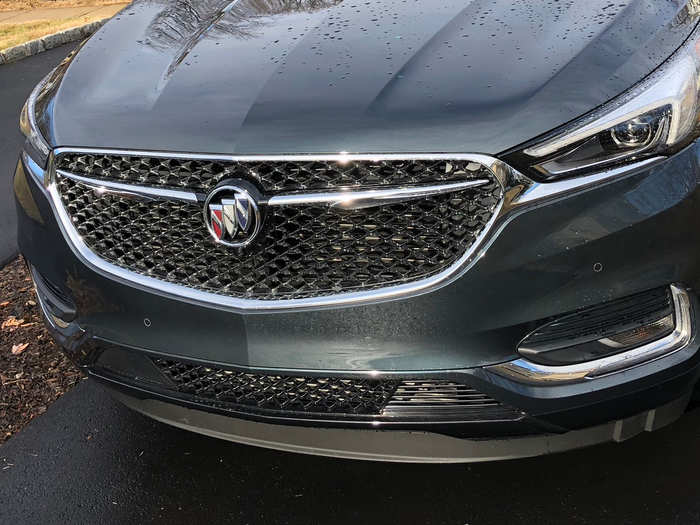
The driving dynamics are quite soft, and that's what I've typically not liked about the Enclave. Somehow, the suave, quiet performance doesn't bother me in Buick sedans.
The interior is premium without being as luxurious as, say, a Mercedes.
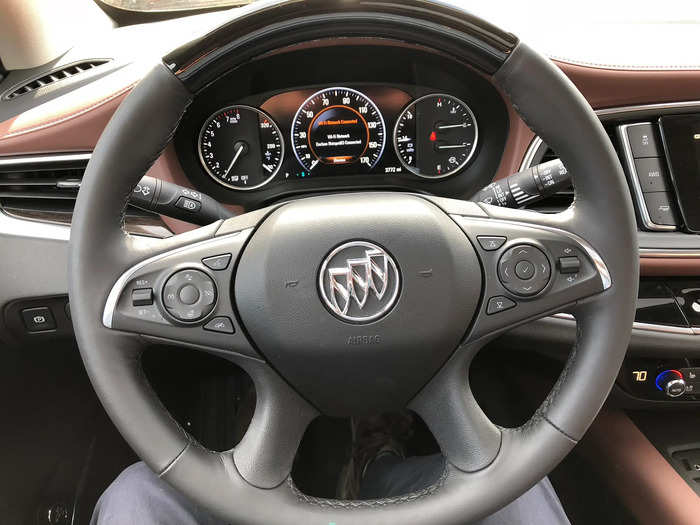
This is a comfy car, there's plenty of room and lots of cargo capacity, especially with the third row folded down. The seats are supportive yet not stiff, and up front, they're heated and cooled.
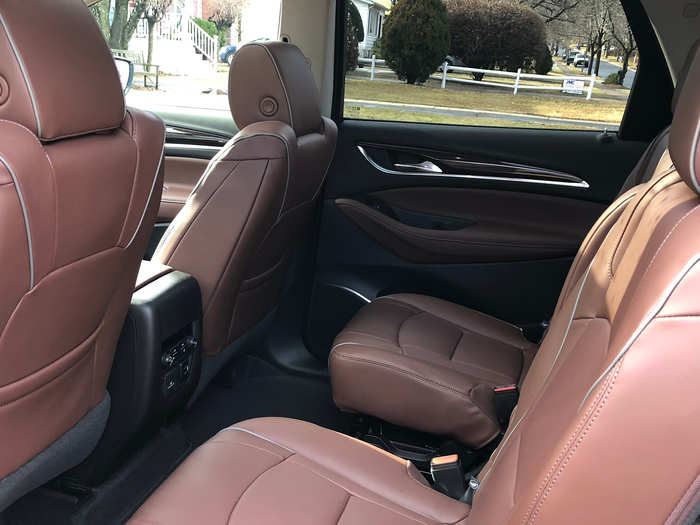
The infotainment system is GM's generally excellent and responsive setup, which we've seen in Chevy, GMC, and Cadillac vehicles. It's easy to use, with breezy Bluetooth device-pairing and 4G LTE Wi-Fi connectivity through the carmaker's OnStar system. The Bose audio system sounds great, and our Enclave tester came with SiriusXM satellite radio.
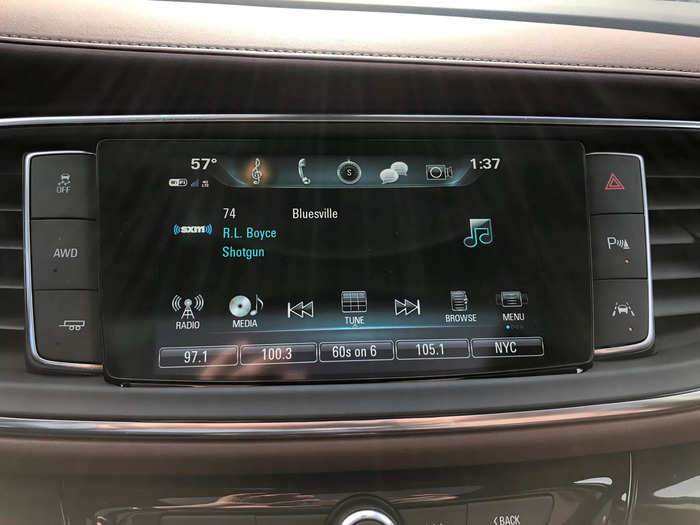
There isn't much to dislike about the Enclave, if you're buying it to haul around a family in style. Buicks are sharp (although Enclave lacks the iconic "ventiports"), and the crossover has a true third row, enabling reasonable seating for seven grownup humans.
Popular Right Now
Advertisement